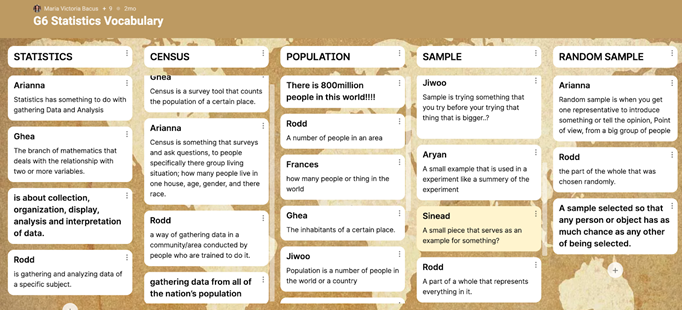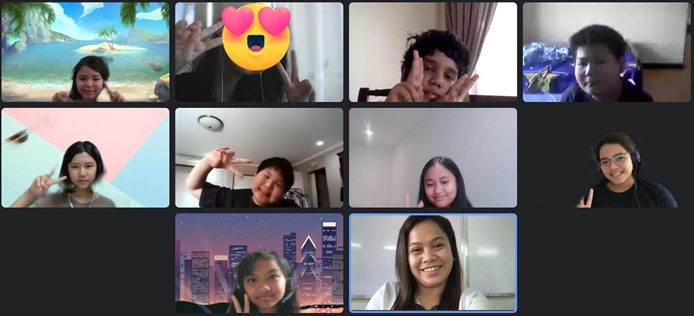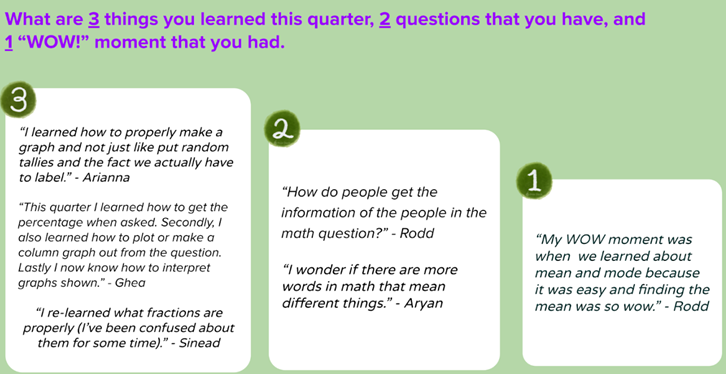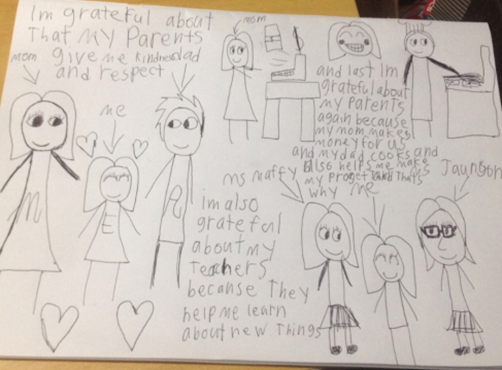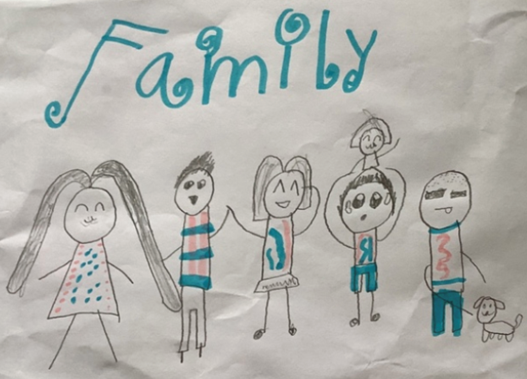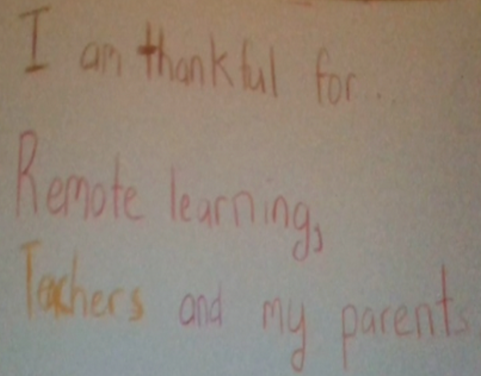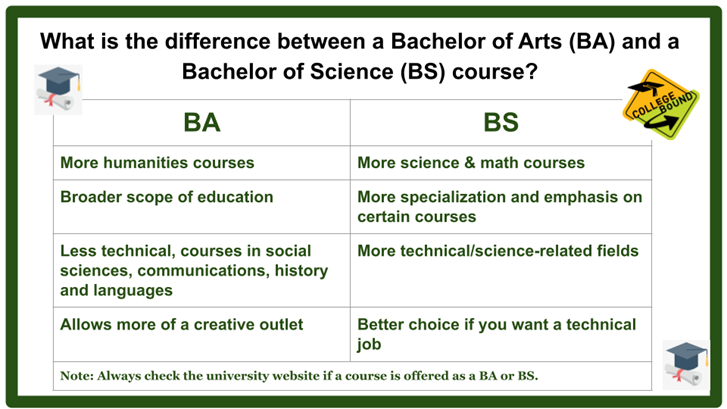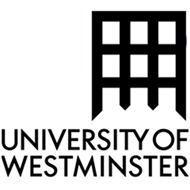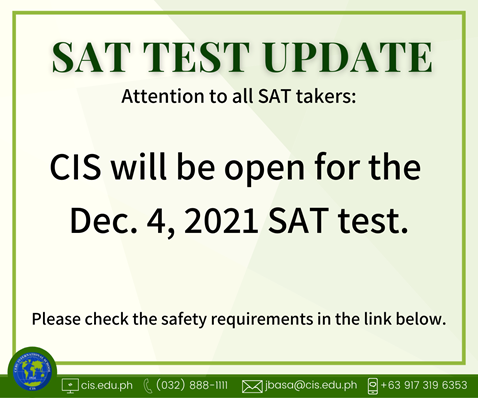
Principal’s Corner
by Mr. Andrew Powell, EY-G12 Principal
As we prepare for a significant transition returning to campus next week, I thought it timely to underscore the importance of the ways in which we will prepare for our community to continue to thrive while navigating the upcoming change.
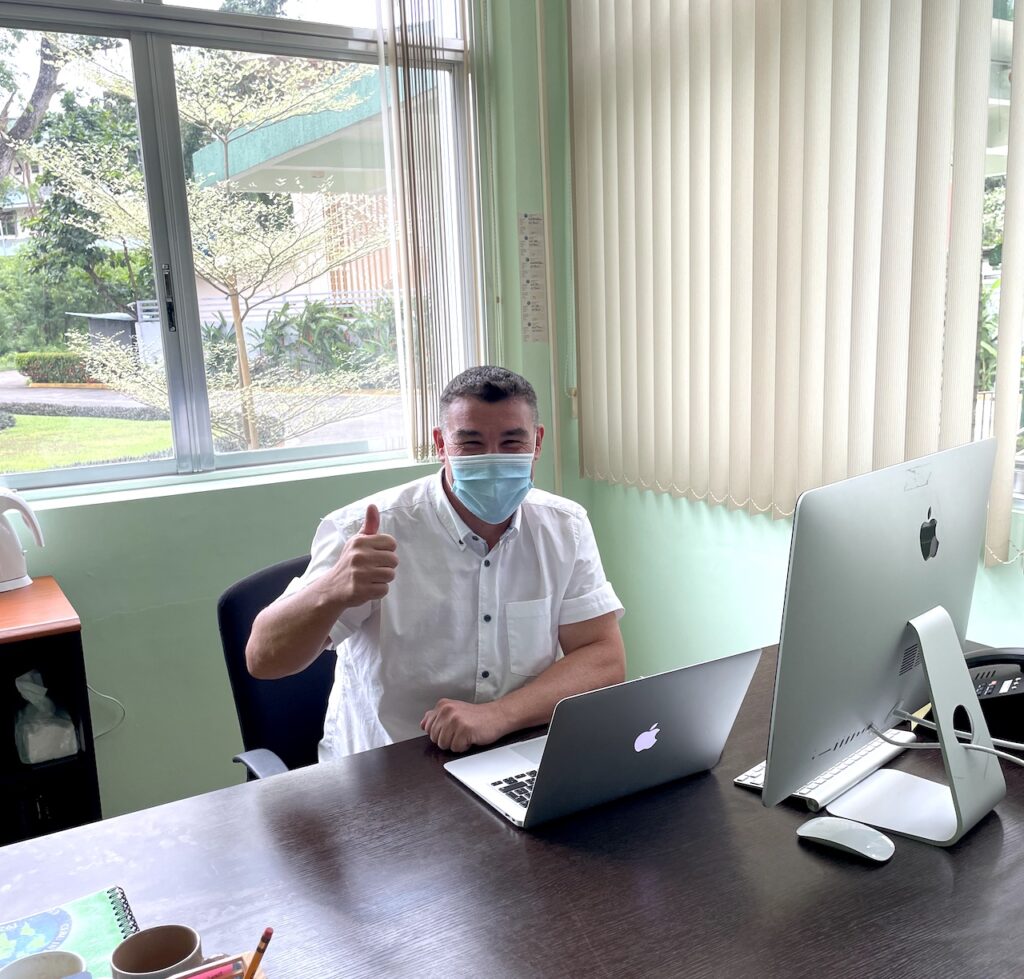
While many of our students will be excited about the prospect of a return to campus, we are mindful that some will benefit from ongoing encouragement and the space to talk and seek reassurance. Throughout the pandemic we have encouraged our students to grow, be adaptive and develop their resilience. This continues. We look forward to greeting our students with a smile and continue to stress the importance of empathy, relationships, and social-emotional development. Our teachers are committed to providing a welcoming, safe, and supportive learning environment.
Our students have been craving personal connection. Having a connected community is important for our wellbeing. It will be important that our teachers and students tend to their personal and virtual relationships in a way that cultivates a sense of a shared experience. We want all of our learners to feel valued through the way in which they interact with each other so that they feel secure and appropriately adjusted to a new but familiar learning environment. Our teachers are cognizant that this transition comes with a degree of uncertainty and will look to empower students through their connections with each other.
As a school we continue to seek creative ways to engage our community and reimagine education. The next phase of our teaching and learning involves a hybrid experience in which students at school and at home will be engaged concurrently in their learning journeys. We view this as a time of excitement and new possibilities. We have proudly embraced innovation within the school and continue to be driven by the latest research on High Impact Teaching Strategies. Our teachers are passionate about ensuring that all students succeed.
We’ve learned that a thriving school community is anchored by a commitment to ongoing learning and constant reflection. This is a process that involves all stakeholders. We look forward to working with you over the coming weeks and continue to be committed to cultivating a valuable school experience for our students.
Kinder/Grade 1 Class
by Ms. Tara Bersabal-Alagao, Kinder/Grade 1 Teacher
 Homes
Homes
For the past five weeks, the Kinder and Grade 1 students have been inquiring about homes. First, we looked into the different kinds of houses around the world and learned that there are different types of houses. Some examples are apartments, mobile homes, cabins, houseboats and farmhouses. We shared what our perfect house would look like if we were to build a house. We learned about opinion writing. Opinion is what you think or how you feel about something. We learned the different parts of opinion writing using the OREO organizer. Then, we turned the picture of our perfect house into writing. We chose what color we would like to have for our perfect house and gave our opinion 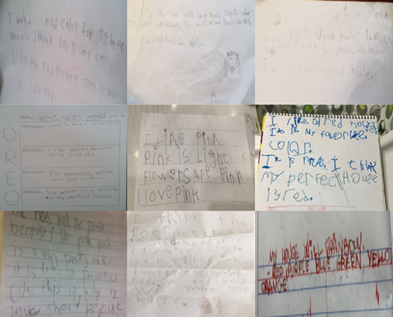 and explained the reason why we chose that color.
and explained the reason why we chose that color.
In this unit, we also learned about the different factors that we need to consider when making decisions in building and designing a house. We pretended to be architects and helped different families in deciding the house that would fit their needs. Some of the things that we need to consider are the climate, geography, available resources and culture.

Through stories and discussions, the Kinder and Grade 1 students have learned the reasons why people need a home. They also discovered the difference between a house and home. A house is a building but a home is a place where we live with our family and where we feel safe, comfortable and happy.
Grade 9: Design
by Ms. Gerri Ancajas Jumao-as, Design Teacher
The Grade 9 Design class are currently busy exploring techniques and developing skills related to textile through a series of formative exercises.
Repairing a tear exercise: This exercise involves mending of cuts or tears in clothes.
Here are some students’ works.
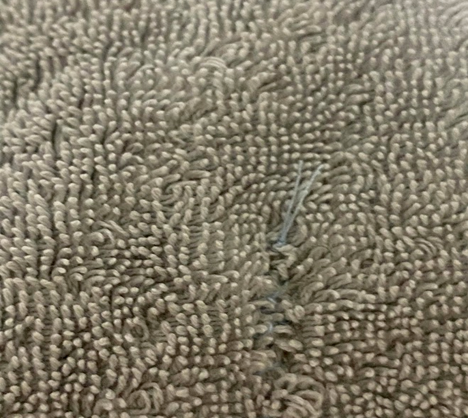
I sewed on the towel. I used a striking color for the thread. I think it would be better if my sewing was a little more precise and consistent. – Yeseul

I think my ending needs a bit more practice, it was ok but I need to look for more techniques on that. Other than that I think I did pretty well; maybe I could make the stitches a little closer to each other but other than these two I’m not sure on how I can improve. – Noam
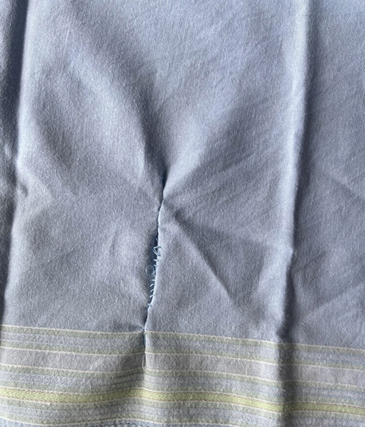
I think my sewing wasn’t that bad, especially that it was my first time doing it. I think I need to really practice and improve my sewing. I also think that I need help from other people who actually know how to sew also and ask for some tips. Overall I think it was ok since it was my first time sewing and repairing a tear. – Aaryan

I used the stitch called “Blanket Stitch”. I found it easy to do; it was not really complicated because I used this stitch mostly when mending rips or small holes. Most of the stitches weren’t really visible from the outside, which was the goal of the work. Thus, I think I did a decent job on this one. – Annika
Patching a hole exercise: This exercise involves using a patch of cloth to repair a clothing that has a hole in it, in order to protect it from further damage or to decorate clothing.
Here are some students’ works.
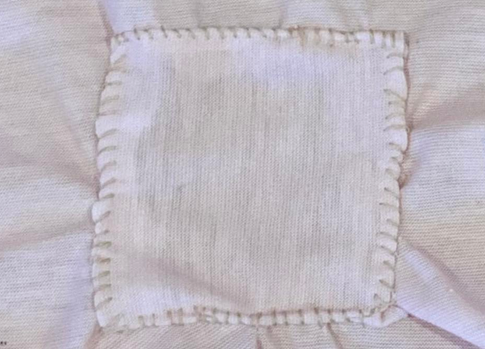
Despite the fact that the whip stitch is easy to do, it was a bit challenging for me to use this method in joining the patch and the cloth. To improve, I should press the fabric and the seams properly as I sew to prevent the cloth from scrunching together, and paying close attention while doing so in order to make the stitches as straight as possible. – Fiana

I am pretty happy with what I did although, the piece of fabric I placed over the hole could have been a little bit tighter for it to not protrude so much. Next time I will make sure to stretch it out beforehand to create a better looking result. – Adam
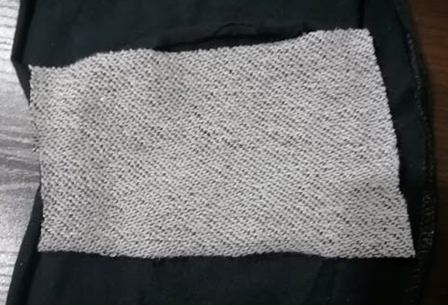
During this task, I improved my precision and patience skills. This assignment challenged me to be extremely exact and patient. There’s a considerable deal of both. In order to get great results, I needed to establish a balance between these two abilities. – Roland
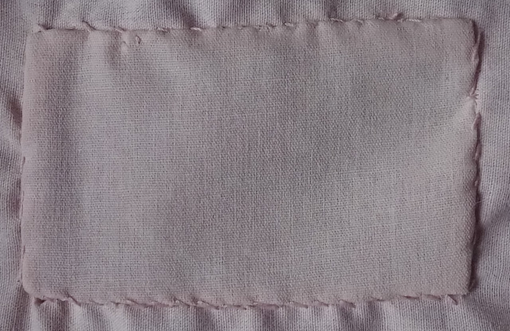
I think I did well with the sewing — not my best work but it was good enough as an amateur rookie in this field of work. Though I feel that way, I do think I could’ve done a better job in achieving the task this first time. In retrospect, I feel I struggled in certain parts of doing the stitch which I think could’ve been quickly overcome (but it seemed I couldn’t then). – Gabrielle
Adding buttons exercise: This exercise involves sewing buttons to clothes as a fastener or decoration.
Here are some students’ works.

I think I did well on my sewing activity, the button was secure, and did not come off. I will improve my sewing skills by finding a more quick way to locate the holes where my needle is supposed to go through. – Elijah

I think my sewing was kind of good. I think I do need some improvement on how I handle the needle and I also need more practice to get used to sewing. Though this is the first time I put on a button, I did relatively well. Some parts of my stitches were also a little bit loose and that’s one thing I could improve. – Aaryan
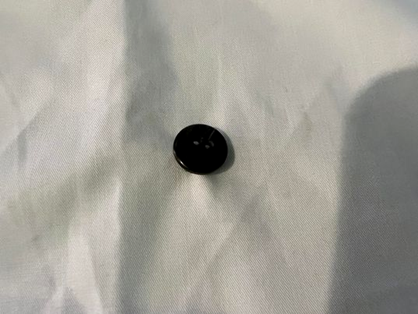
Overall I believe my performance for this task was pretty decent. To improve I want to not crease my fabric and do it more accurately so that there is space in between the button and the fabric because if the fabric is too close to the button the person will not be able to move the button. – Sengo

I think overall I could’ve done a better job even if the product was functional and overall because it is pretty tidy. I think that some of the strategies to make improvements are to go even slower to really make sure I did every step well because the process is more important than the final product and the product is just what comes out of a well thought and well executed process. – Miguel
Weaving exercise: This exercise involves two sets of yarns or threads that are interlaced at right angles to form a fabric or cloth.
Here are some students’ works.
I think that I did ok for my first time, definitely need some improvement but overall for me I think it’s ok. – Sengo


Middle & High School Drama
by Ms. Stefanny Hermias, Drama Teacher
Grade 6 and 7 Movement: Pantomime
In our Unit 1, Grade 6 and 7 students are introduced to the concept of movement being an effective use of communication. Students physically created objects, and portrayed scenes through pantomimic technique. Students explored the basic principles of pantomime and used exaggerated movement to evoke emotion. Students also used deliberate and motivated movement to explore thoughts and feelings, which will prepare them to create a physical life for a character. In their summative assessment, they recorded a video of themselves pantomiming activities based on trending issues, such as: Covid 19/pandemic, typhoon Odette, remote learning etc. Here are some summative video responses from the Grade 6/7 Drama Da Vinci class.
Please click each student’s name to watch their ‘pantomime’ video.
Spoken Word Poetry
During our ACL (Adverse Circumstance Learning) program, Grade 6 and 7 Drama students explored the world of “Poetry”. Students had the opportunity to watch several videos on spoken poetry which included some performances from last year’s students in Drama. They have been provided with ready-made poetry materials that they could use for their individual pre-assessment tasks.
Please click here to watch some video snippets of the Grade 6/7 poetry pre-assessment performances.
Student reflections:
I learned that I could speak fast, I usually speak slow so I didn’t really know I could speak fast without getting my tongue twisted. One thing that got in the way of my progress was that I would often procrastinate on practicing and recording during the week. This was because I didn’t want to record a video and talk out loud. But as the week was ending and the number of assignments decreased, I finally got around to practicing and recording a video. A big challenge I faced was taking notes about the poem, since this was my first time doing this I wasn’t exactly sure what to do. However, I was able to write down what I thought would fit and be relevant to the poem. I find spoken word poetry fun. I enjoyed decrypting the meaning behind my chosen poem, although I wasn’t sure what to do at first. I wasn’t that avid about shooting a video though, this is due to the fact that I usually work at night since that’s morning time in Cebu. If I were to re-do the spoken poetry again I would have tried to plan out my movements, since they were mostly random and only made a little sense when tied to the poem. Nino V.
I think when doing this project I could do better but I think I had a hard time memorizing because my tongue got twisted in a way. Another thing is that I was able to speak loudly and I was able to memorize most of it, especially the last part. I liked the poem Iread. It really satisfied me.It was fun too in a way! Arianna P.
Throughout this project, I’ve learned more about how poetry can help people realize their own portions of life, and how it evolves and develops with that realization. Another factor could be the simplicity in which I was able to articulate the section of the statement and position the emotions throughout the performance. Trying to find distinct emotions to communicate within the different lines that would correlate to the mood it conveyed was a problem that occurred during the performance process. The most difficult parts were trying to incorporate hand gestures and facial expressions as I was mostly focused on the emotions and how the poem was presented within words and feelings, but not so much on the hand gestures and facial expressions, which made it difficult to fully represent the poem with full on emotional responses. I thoroughly enjoyed reading through the poem and experiencing the rush of sensations I felt when I first read the lines, reliving those emotions while understanding the passage and the poem’s significance and depth. Despite the fact that it was required, I despised the way I had to present.To emphasize the performance and give it more passion, I’d add more facial expressions and hand motions. M S.
Grade 8 & 9 Drama
Unit 1: Monologues
Grade 8 and 9 students started their elective class in Drama this second semester. During our ACL program in January, students were able to demonstrate their ability to memorize and improve their character development skills by performing a monologue. They were provided with 15 ready- made monologue materials to choose from for their pre- assessment tasks.
As we resumed our regular remote learning, we explored the types of monologue and its features as well as ways on how to write a monologue. In our formative assessments, students were introduced to a monologue which came from the Big Bad Wolf in the tale of Little Red Riding Hood. After reading and performing the monologue, they then had the opportunity to write their own monologue for a character in a story and delivered it in class. You may find some of the recorded videos of “The Wolf’s Woes” Grade 8/9 own version monologue below.
Currently, Grade 8/9 Drama students are in the process of their summative assessments. One of the tasks is for them to be able to select one character from a published play or movie and find a 3-5 minute monologue that best represents that character. Stay tuned for their upcoming monologue performances that will be showcased soon.

College/Careers Counselor Corner
by Ms. Jenny Basa, College/Careers Counselor
Question of the Week:
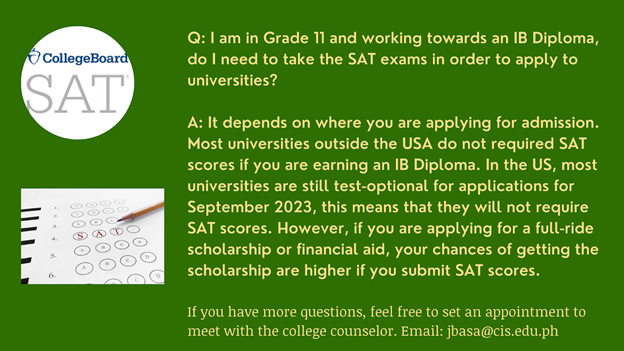
Upcoming Virtual Events and FAIRS: (students & parents are welcome)
DATE
March 17
Thursday
7:30PM Eastern time
Link to register
Investing in Your Future: The Return on College
This interactive Q&A will:
- Explain the nuances of college ROI (Return on Investment) as well as its limitations
- Explore key findings of the Georgetown Center on Education and the Workforce report which ranked 4,500 colleges and universities by ROI
- Discuss how the U.S. Department of Education’s College Scorecard can help families make fiscally responsible decisions
March 24
Thursday
4:00pm
Link to register
Do Facts Mean Truth?
In a world overwhelmed by misinformation and falsehood, does knowing the facts always present truth and reality? This talk will introduce students to fact-checking through some fun examples and point out that our own biases play a part in our understanding of truth and reality. (Webinar by Hong Kong Baptist University, with a short presentation about admissions at the end of the webinar)
March 25 & 26
1:00 – 7:00PM
Study Abroad Virtual Fair

SAT Update
The SAT exam for March 12, 2022 will push through.

For safety requirements and guidelines, please refer to https://go.cis.edu.ph/SAT-guidelines
Dragon’s Print
As students, we all know that the feeling of academic stress is inevitable. Even if you are a stellar student, it is extremely difficult to stay stress-free, especially as you progress through higher grade levels. Read more about academic stress and mental health concerns at https://dragonsprint.cis.edu.
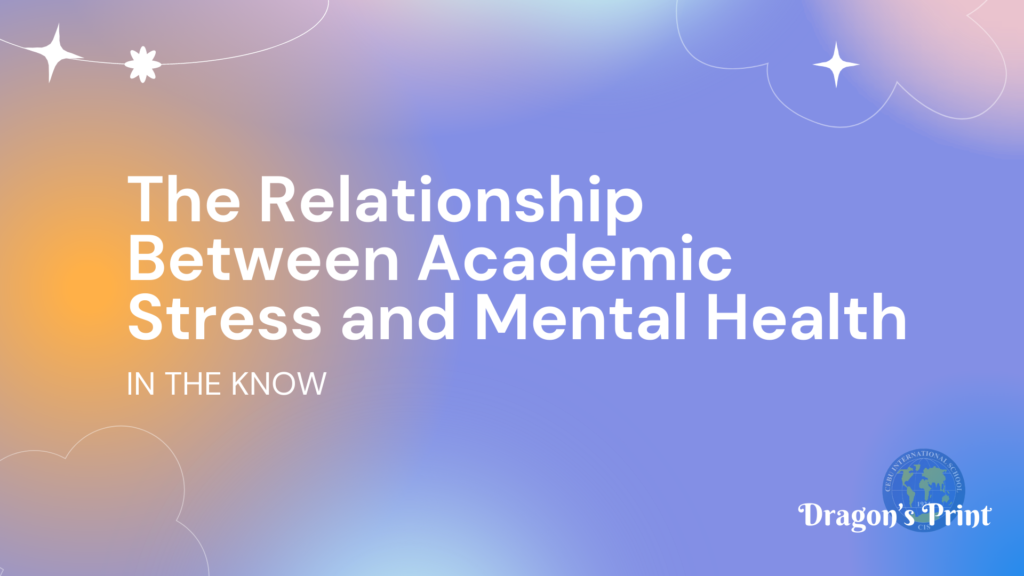




 Phase 1: Family bubble exercise opportunities using school facilities (under the conditions of the Executive Orders governing exercising during specific alert levels) – Commenced May 2021.
Phase 1: Family bubble exercise opportunities using school facilities (under the conditions of the Executive Orders governing exercising during specific alert levels) – Commenced May 2021.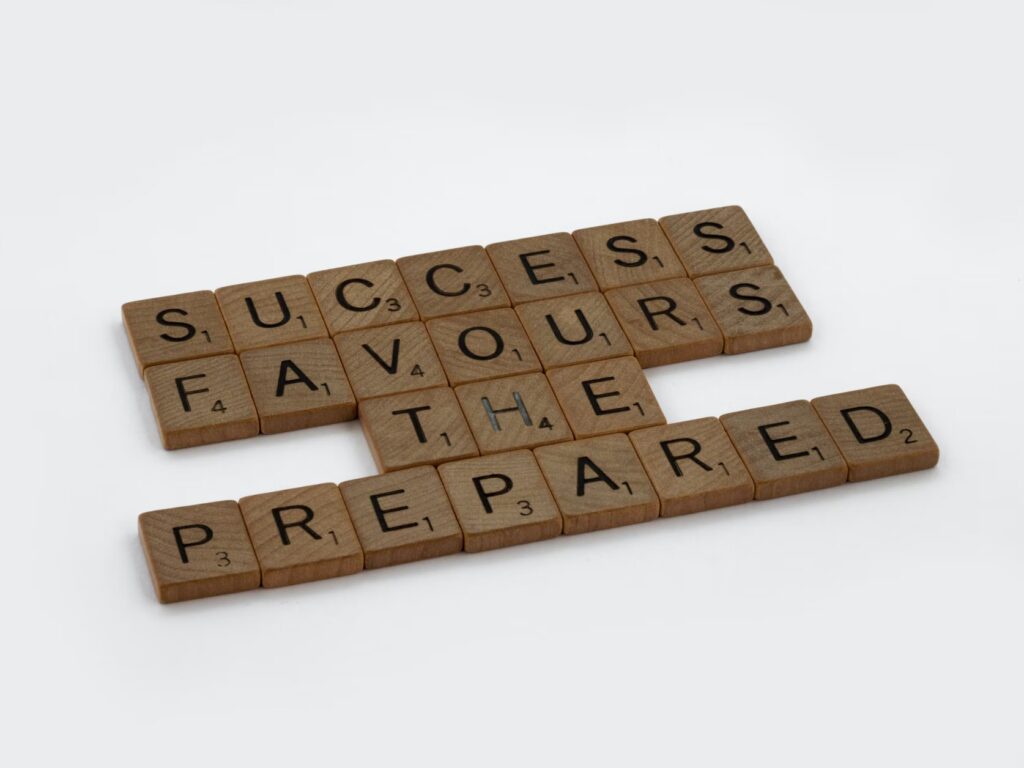 We will be providing multiple opportunities for you to learn about the changes and expectations as we come onto campus, and ask questions.
We will be providing multiple opportunities for you to learn about the changes and expectations as we come onto campus, and ask questions.
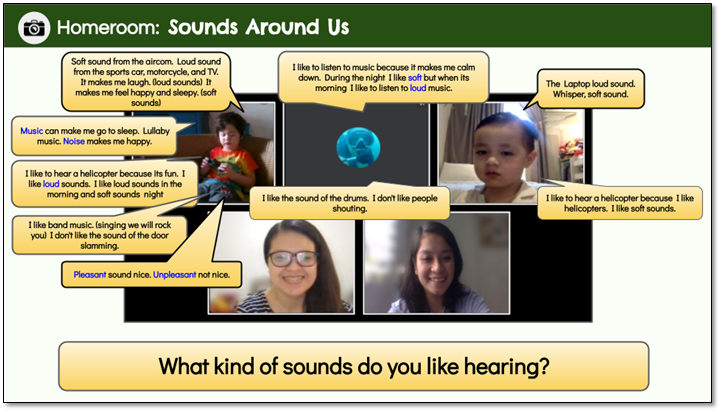

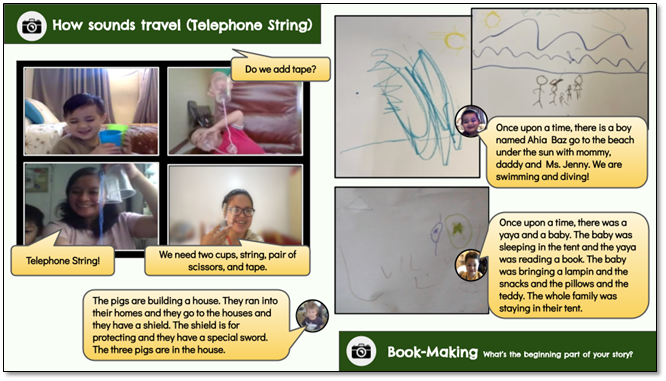

 will understand the text and express himself or herself orally. To expand their vocabulary, students explore words related to their units of inquiry. They learn their meaning, spelling, and usage. They engage in varied activities to review and master the words such as Word Search, Crossword puzzles, unscrambling letters, and playing games like 4Pics-1Word, Pictionary, Drawize, Scattergories, charades, etc.
will understand the text and express himself or herself orally. To expand their vocabulary, students explore words related to their units of inquiry. They learn their meaning, spelling, and usage. They engage in varied activities to review and master the words such as Word Search, Crossword puzzles, unscrambling letters, and playing games like 4Pics-1Word, Pictionary, Drawize, Scattergories, charades, etc.
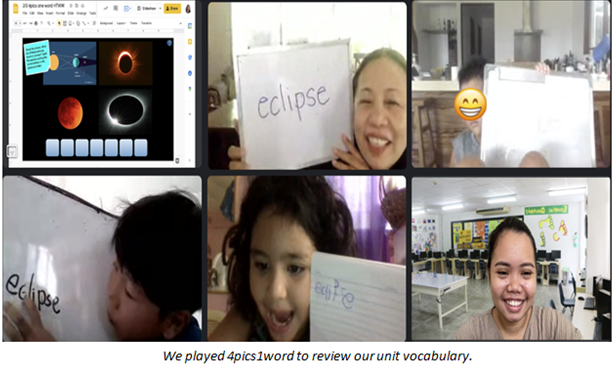
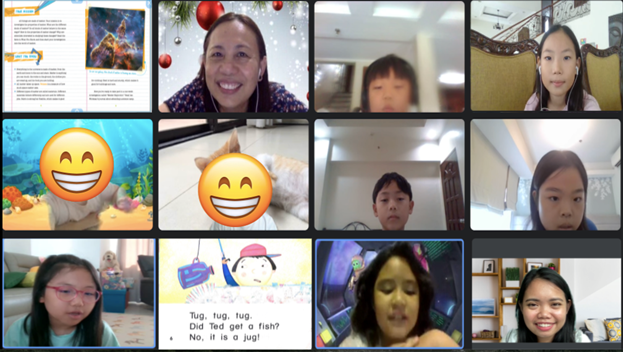 develop other related skills such as grammar, vocabulary, and writing. It allows students to see grammatically correct sentences in context and this can serve as their model for their own writing. While reading, students learn new words. In class, students read fiction and nonfiction books related to their units of inquiry to improve their accuracy, fluency, vocabulary, and comprehension. Reading materials are utilized as mentor texts or as springboards to writing activities and to support the reading skills developed in their literacy class.
develop other related skills such as grammar, vocabulary, and writing. It allows students to see grammatically correct sentences in context and this can serve as their model for their own writing. While reading, students learn new words. In class, students read fiction and nonfiction books related to their units of inquiry to improve their accuracy, fluency, vocabulary, and comprehension. Reading materials are utilized as mentor texts or as springboards to writing activities and to support the reading skills developed in their literacy class. Writing practice helps students think and speak in the language they are learning. As they continue practicing, they are able to quickly form new thoughts in that language. The practice eventually leads to proficiency in the language because they have developed a deeper understanding of it.
Writing practice helps students think and speak in the language they are learning. As they continue practicing, they are able to quickly form new thoughts in that language. The practice eventually leads to proficiency in the language because they have developed a deeper understanding of it.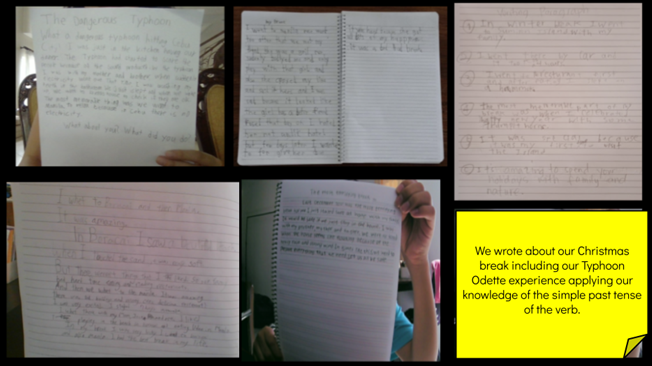
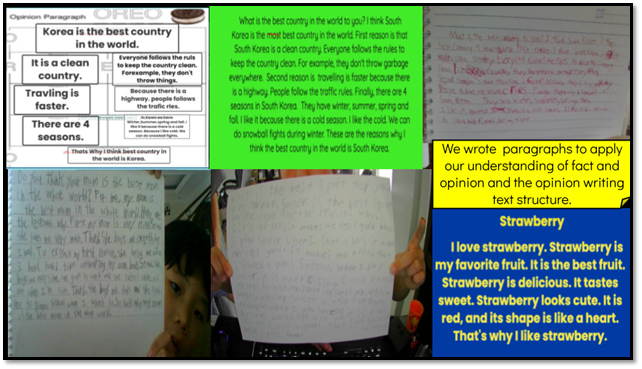
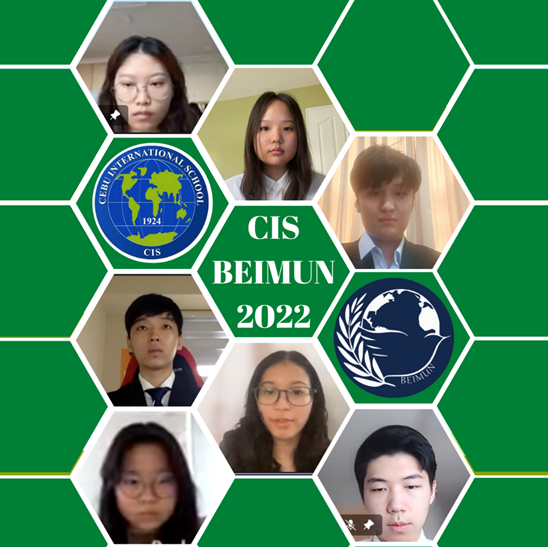 students from 39 different schools joining Microsoft Team to have committee meetings, breakout sessions, and debates. The Conference spanned four days, with an additional prep day the week before.
students from 39 different schools joining Microsoft Team to have committee meetings, breakout sessions, and debates. The Conference spanned four days, with an additional prep day the week before.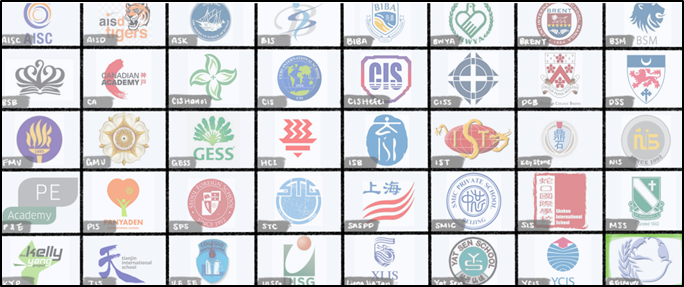
 Imagine an assessment where you are given the answer scheme ahead of time. Where you know how you have done before the teacher even looks at your work. No need to imagine. This is the reality of assessment in the MYP.
Imagine an assessment where you are given the answer scheme ahead of time. Where you know how you have done before the teacher even looks at your work. No need to imagine. This is the reality of assessment in the MYP.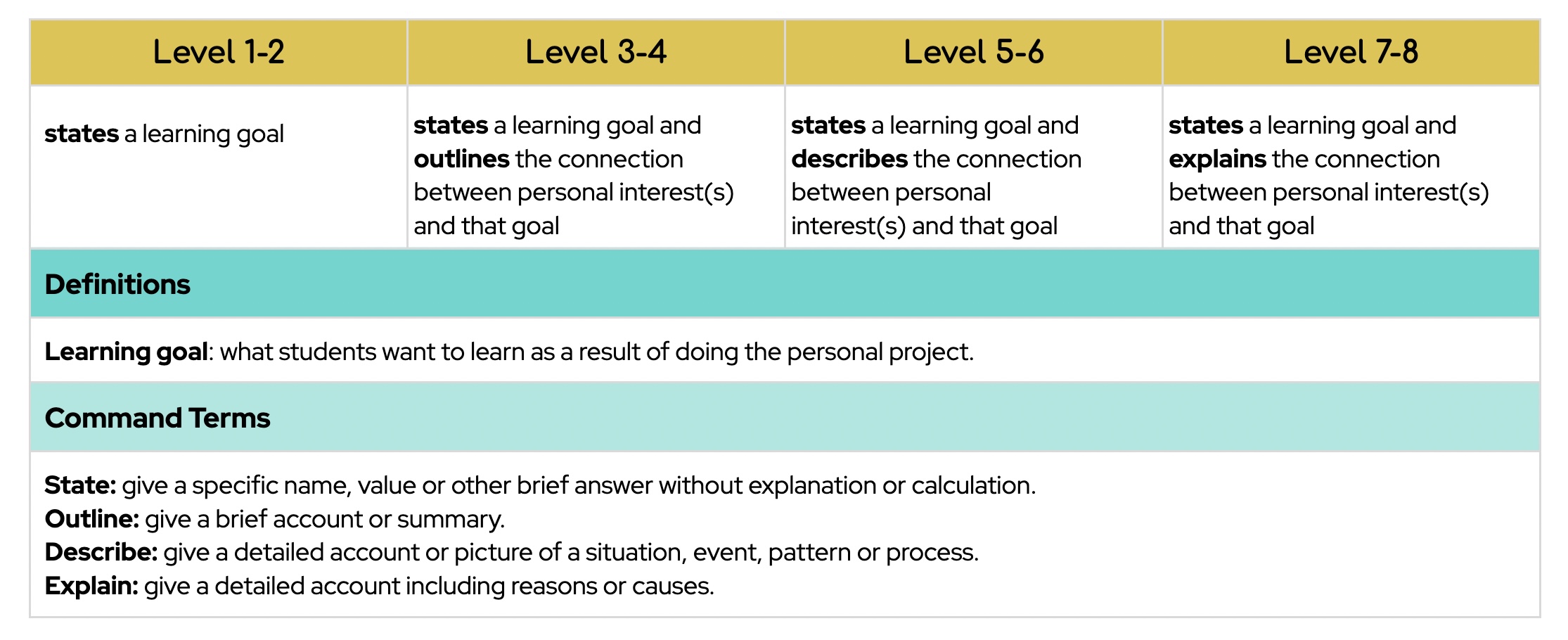
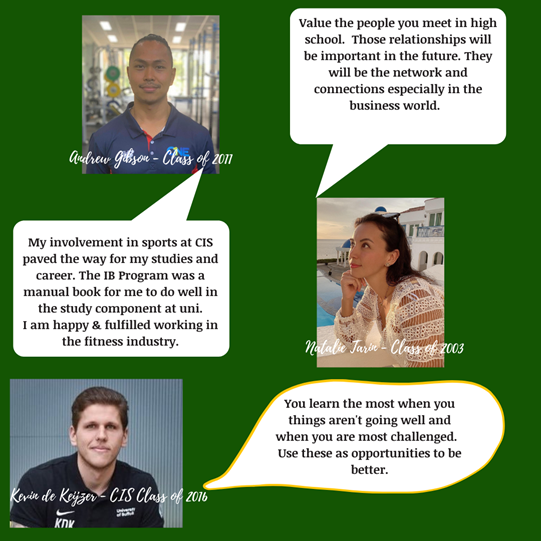

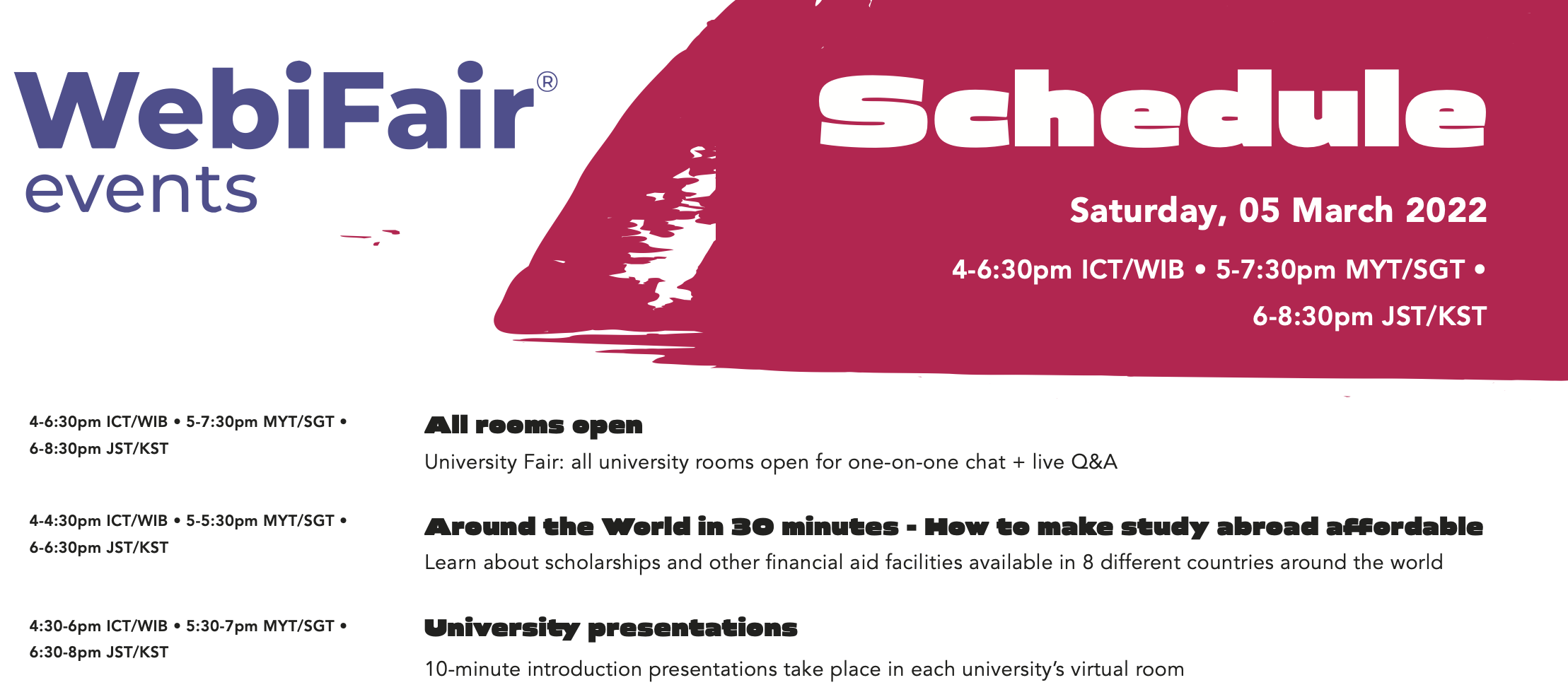
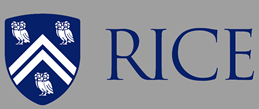


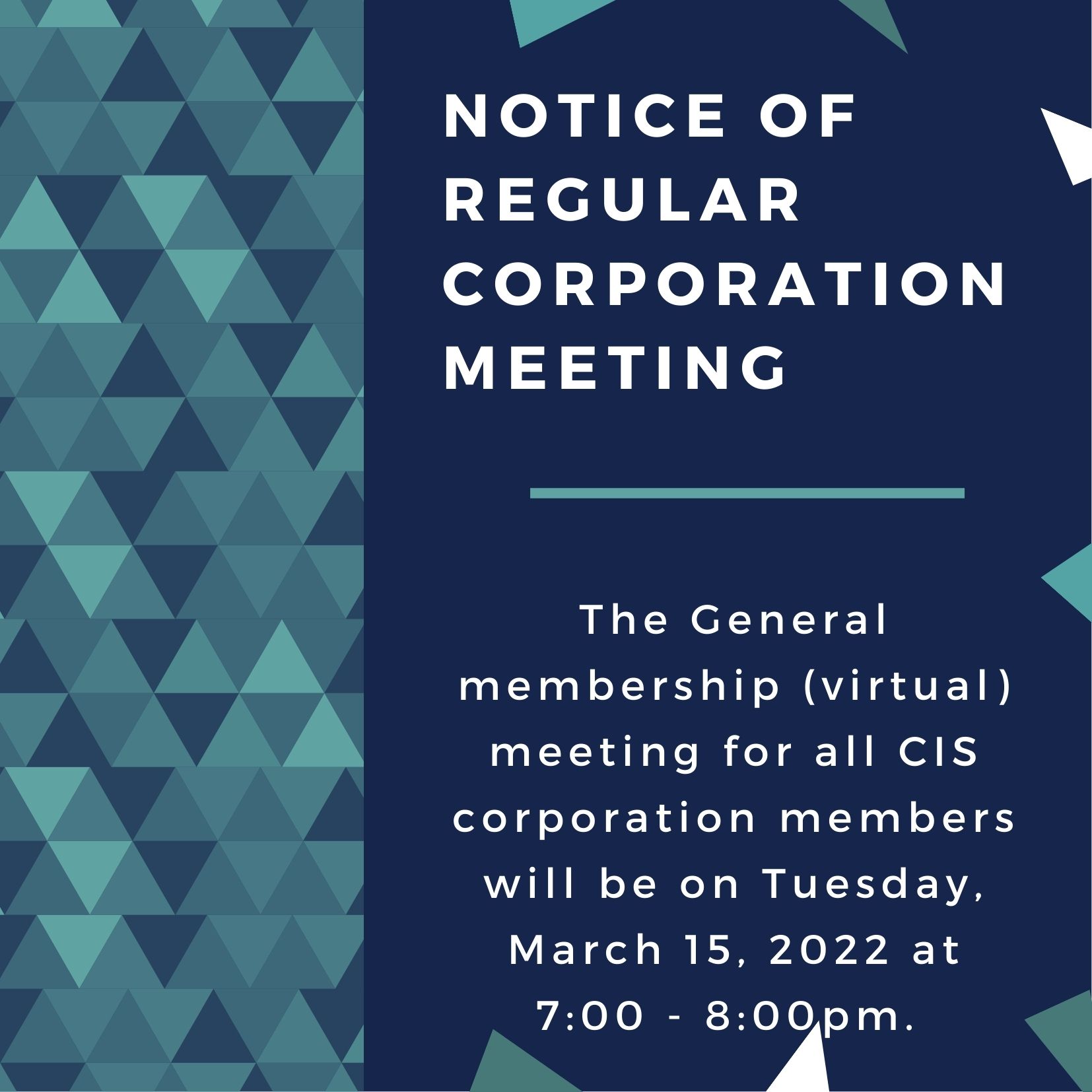

 Passion comes from one’s purpose. It provides drive and enables us to give our best, no matter the circumstances. Passion provides us with the potential to make an impact on society. It leads to innovation and above all, provides us with hope.
Passion comes from one’s purpose. It provides drive and enables us to give our best, no matter the circumstances. Passion provides us with the potential to make an impact on society. It leads to innovation and above all, provides us with hope. 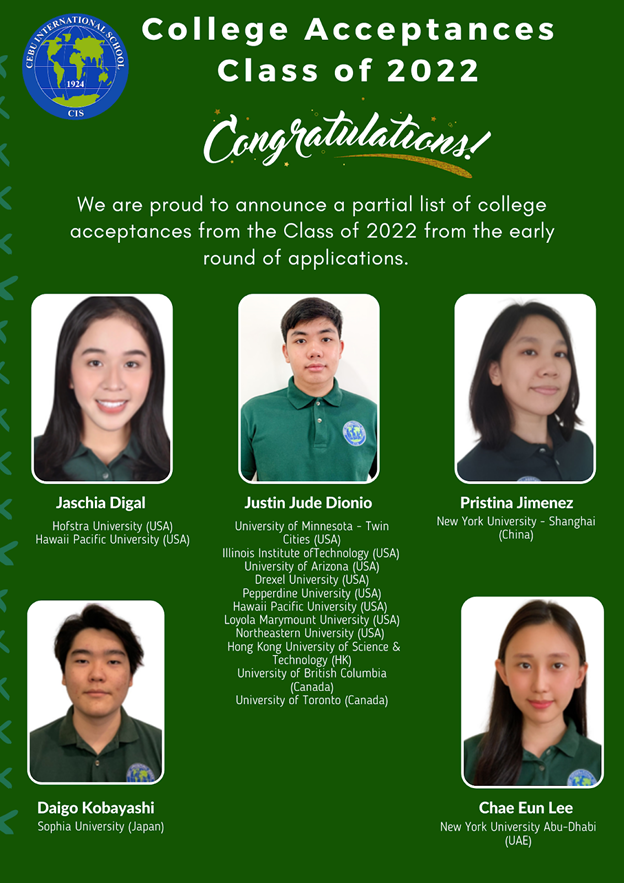
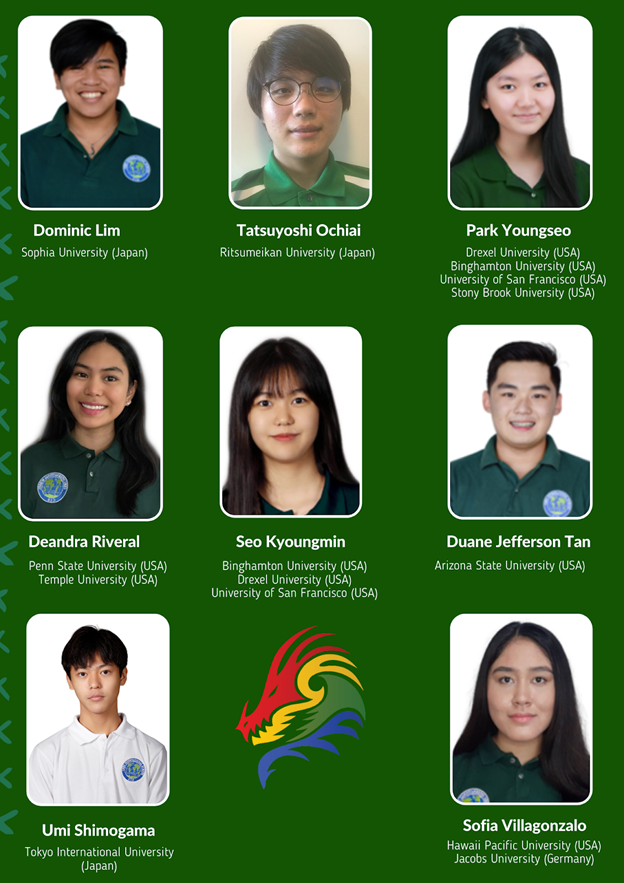

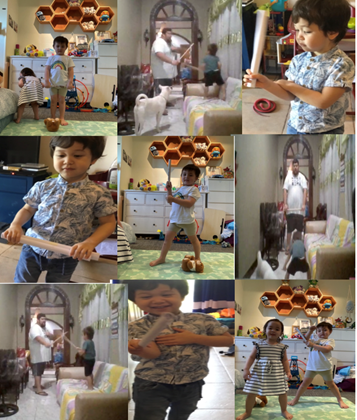 role models or influential people. Influential means someone vital, strong, who makes a big difference in the lives of others. We talked about Manny Pacquiao and his significant contributions to the sport of boxing. Then, we spoke about Remy Presas, the father of modern Arnis. We learned about Arnis, the Philippines’ national martial arts.
role models or influential people. Influential means someone vital, strong, who makes a big difference in the lives of others. We talked about Manny Pacquiao and his significant contributions to the sport of boxing. Then, we spoke about Remy Presas, the father of modern Arnis. We learned about Arnis, the Philippines’ national martial arts. 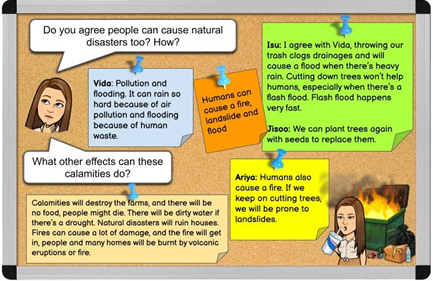 Grade 2 and 3 continued to explore the unit “Where We Are in Place and Time” and focused on Philippine geography. We recently discussed the common calamities in the country and how calamities affect the landforms, water forms, and people. We also talked about how people can cause or contribute to the severity of natural disasters.
Grade 2 and 3 continued to explore the unit “Where We Are in Place and Time” and focused on Philippine geography. We recently discussed the common calamities in the country and how calamities affect the landforms, water forms, and people. We also talked about how people can cause or contribute to the severity of natural disasters.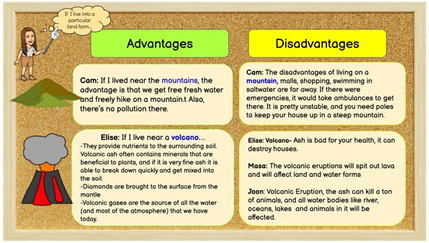
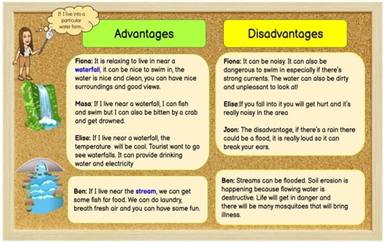

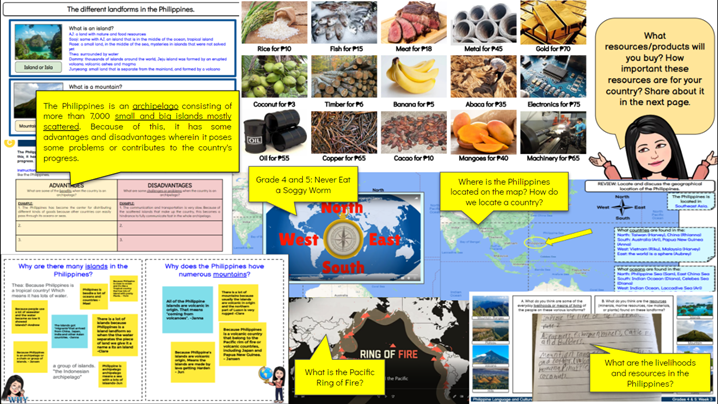
 Understanding the words export vs import helped the students connect to our unit further. We learned that the Philippines, specifically in Mindanao, is one of the leading exporters of bananas globally. The students got to discover how they prepared the bananas before the exportation.
Understanding the words export vs import helped the students connect to our unit further. We learned that the Philippines, specifically in Mindanao, is one of the leading exporters of bananas globally. The students got to discover how they prepared the bananas before the exportation. 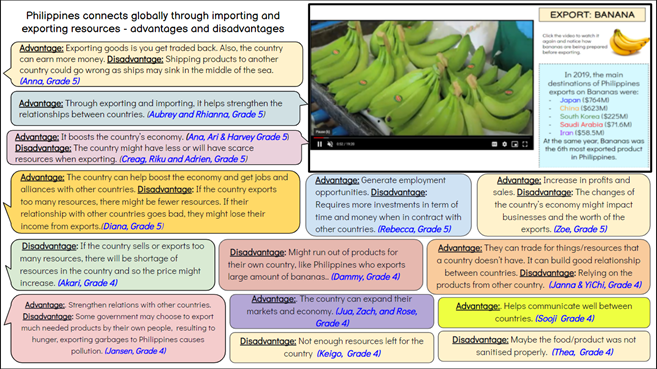

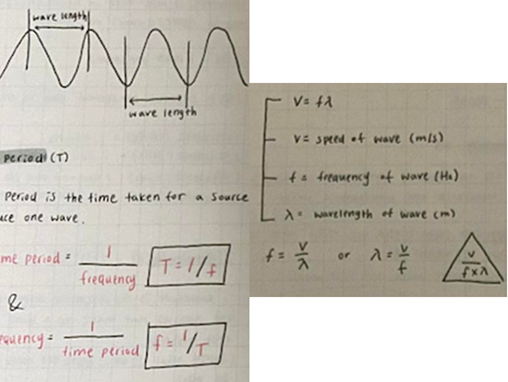



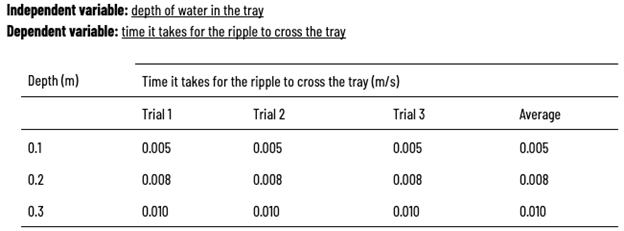
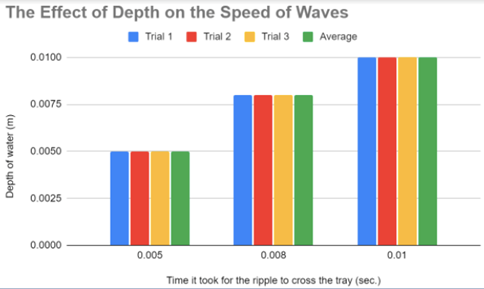

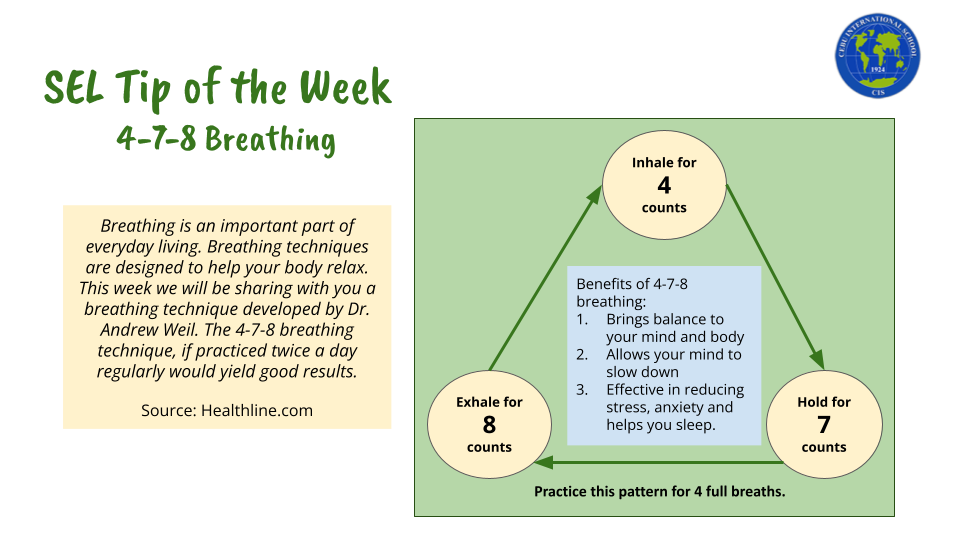

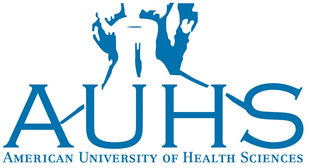
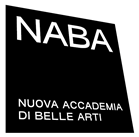


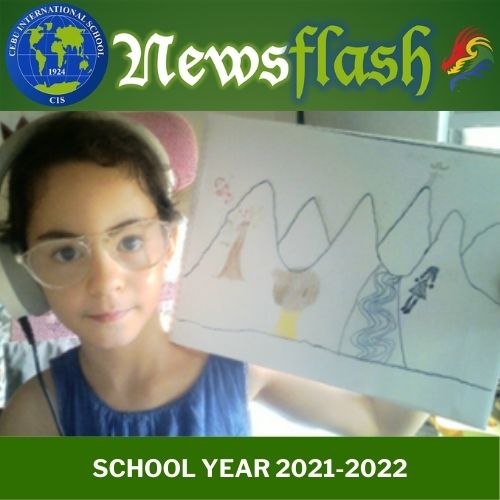
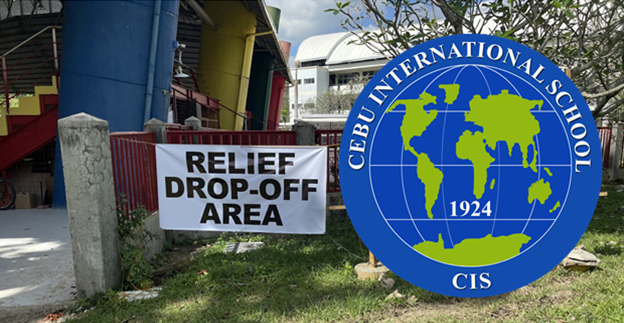 “
“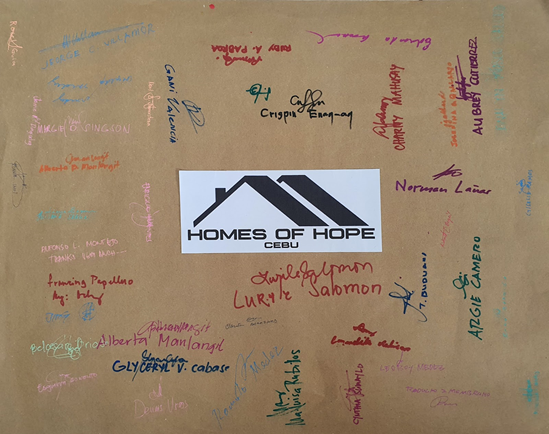 Homes of Hope aims to help rebuild the homes of typhoon Odette victims. Donations are used to buy walling and roofing materials as well as the corresponding nails and screws needed. Each preselected beneficiary receives ₱10,000 worth of materials. As of Feb 5, we had distributed 20 homes to Barangay Busay and 20 homes in Barangay Ibo Mactan. On Feb 12, we will be distributing 30 homes to Punta Engaño Mactan and shortly after, we will be distributing 40 homes to Baranga Inawayan’s garbage dumpsite. This brings us to a total of 110 Homes.
Homes of Hope aims to help rebuild the homes of typhoon Odette victims. Donations are used to buy walling and roofing materials as well as the corresponding nails and screws needed. Each preselected beneficiary receives ₱10,000 worth of materials. As of Feb 5, we had distributed 20 homes to Barangay Busay and 20 homes in Barangay Ibo Mactan. On Feb 12, we will be distributing 30 homes to Punta Engaño Mactan and shortly after, we will be distributing 40 homes to Baranga Inawayan’s garbage dumpsite. This brings us to a total of 110 Homes.

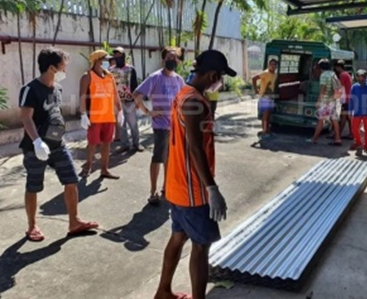
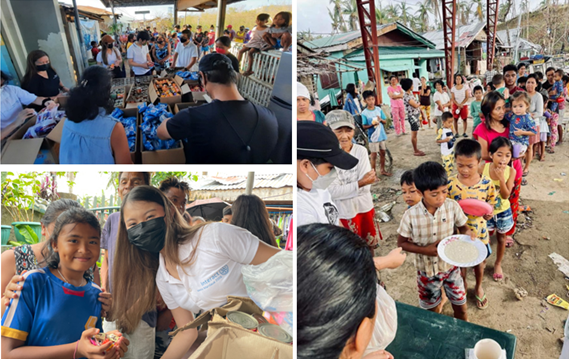 Interact, I was able to activate teams across the country to work towards immediate relief operations for typhoon Odette as soon as it was possible. Coordination was difficult due to intermittent signal and personally having no power or water in my own household for almost a month, but work had to be done. Fundraising efforts started the day after the typhoon, and help was received at our first location at the Umapad Dumpsite Community in Mandaue a few days later. Since then, relief drives in multiple areas have followed simultaneously every week in Barangay Balisong in Argao, Municipality of Dapa in Siargao, Caohagan, Pangan-an, Pandanon, and Bagonbanwa islands. Relief goods include canned or instant food, containers of drinkable water, powdered milk for kids, trapal, basic medicines, and hygiene kits depending on the
Interact, I was able to activate teams across the country to work towards immediate relief operations for typhoon Odette as soon as it was possible. Coordination was difficult due to intermittent signal and personally having no power or water in my own household for almost a month, but work had to be done. Fundraising efforts started the day after the typhoon, and help was received at our first location at the Umapad Dumpsite Community in Mandaue a few days later. Since then, relief drives in multiple areas have followed simultaneously every week in Barangay Balisong in Argao, Municipality of Dapa in Siargao, Caohagan, Pangan-an, Pandanon, and Bagonbanwa islands. Relief goods include canned or instant food, containers of drinkable water, powdered milk for kids, trapal, basic medicines, and hygiene kits depending on the 

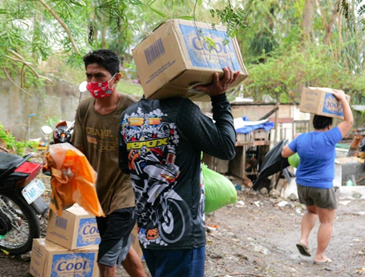
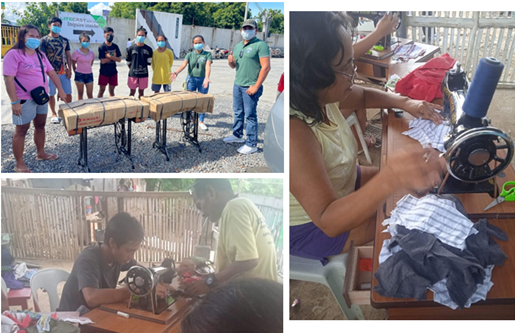 The Sewpports are a team of students that aim to help the community at Brgy. Umapad by giving them a livelihood through sewing. This community has been affected by both the pandemic and typhoon Odette, but the community leaders are very motivated to help themselves and work, and the Sewpports want to support that! We aim to help them source raise funds and source fabric and sewing materials, so that they can create their rags and face masks to sell.
The Sewpports are a team of students that aim to help the community at Brgy. Umapad by giving them a livelihood through sewing. This community has been affected by both the pandemic and typhoon Odette, but the community leaders are very motivated to help themselves and work, and the Sewpports want to support that! We aim to help them source raise funds and source fabric and sewing materials, so that they can create their rags and face masks to sell.
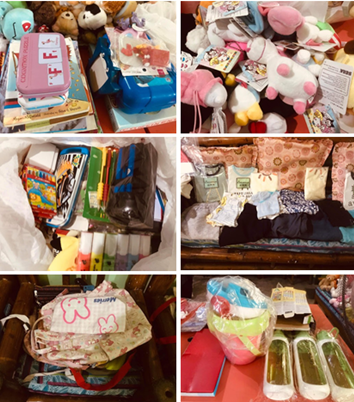
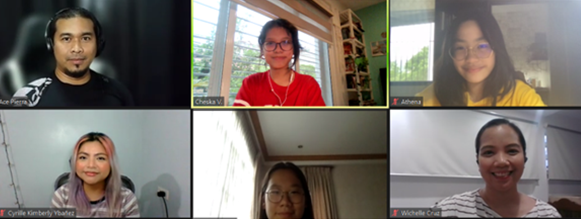 World Vision is an advocacy and relief organization dedicated to working with children, families, and their communities worldwide to reach their full potential by addressing the causes of societal issues. Founded in 1957, World Vision in the Philippines is a nationally recognized organization that has a proven track record of child-focused, community development programs. For the past few months, World Vision has been planning to commit as a collaborator with CIS in its event, Week Without Walls. The CIS team (Athena, Camille, Chae, and Chesca) have been constantly communicating with the World Vision heads in order to create a project that would align with World Vision’s current projects and one that can be co-branded by CIS. Due to typhoon Odette, the team has decided to focus on areas in the North of Cebu affected by the typhoon. Along with this, they have also drafted plans on how to involve students in Service Learning for the WWW. The team has been able to work flexibly and manage to collaborate with World Vision in creating sustainable projects that align themselves with the core values of the organization and CAS itself.
World Vision is an advocacy and relief organization dedicated to working with children, families, and their communities worldwide to reach their full potential by addressing the causes of societal issues. Founded in 1957, World Vision in the Philippines is a nationally recognized organization that has a proven track record of child-focused, community development programs. For the past few months, World Vision has been planning to commit as a collaborator with CIS in its event, Week Without Walls. The CIS team (Athena, Camille, Chae, and Chesca) have been constantly communicating with the World Vision heads in order to create a project that would align with World Vision’s current projects and one that can be co-branded by CIS. Due to typhoon Odette, the team has decided to focus on areas in the North of Cebu affected by the typhoon. Along with this, they have also drafted plans on how to involve students in Service Learning for the WWW. The team has been able to work flexibly and manage to collaborate with World Vision in creating sustainable projects that align themselves with the core values of the organization and CAS itself.
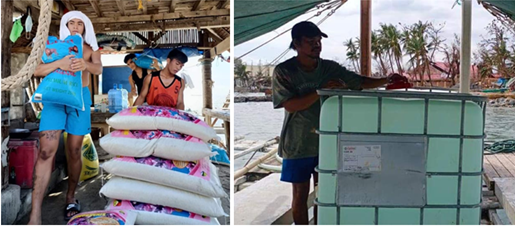



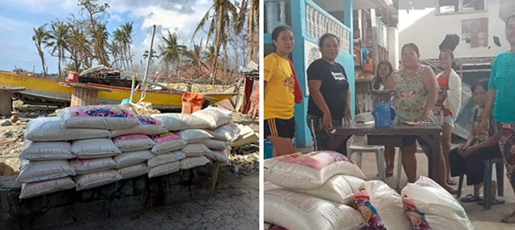

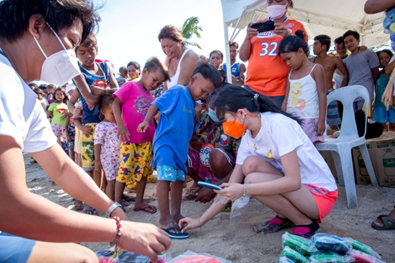
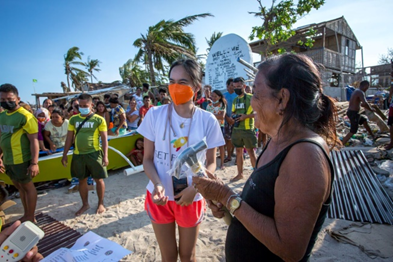

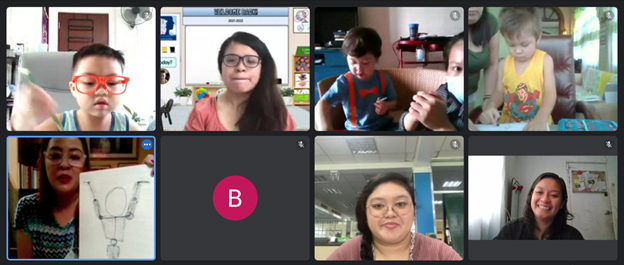 In the Early Years, we began our unit on Basic Drawing. Our first learning engagement was to try and draw a human figure by drawing a stickman.
In the Early Years, we began our unit on Basic Drawing. Our first learning engagement was to try and draw a human figure by drawing a stickman.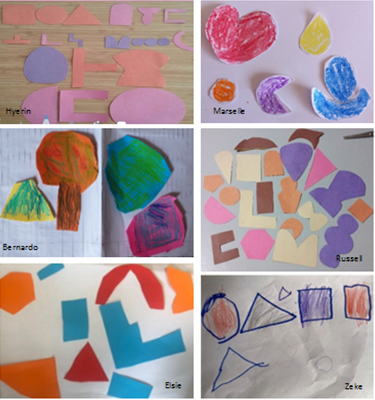

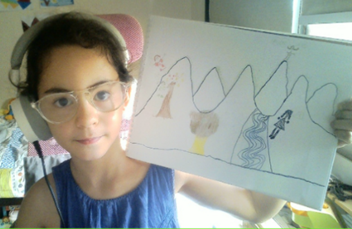
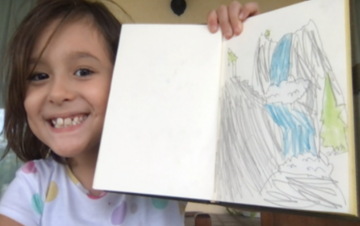
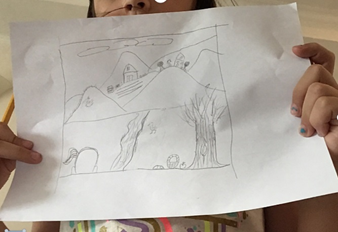
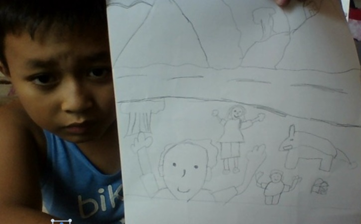

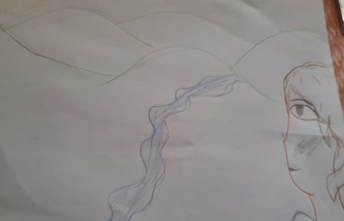

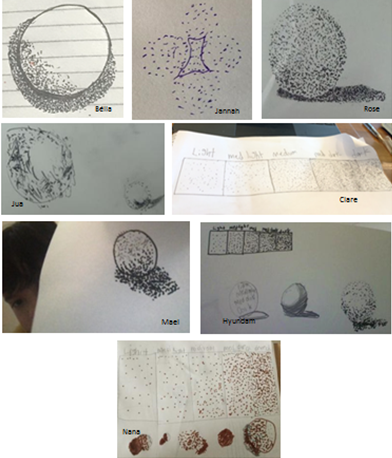


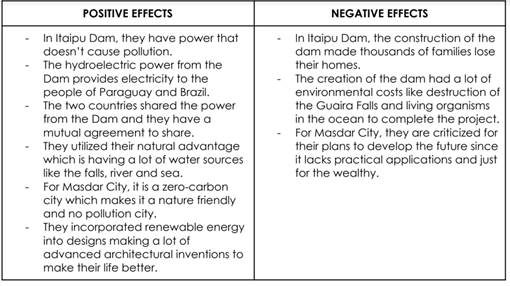


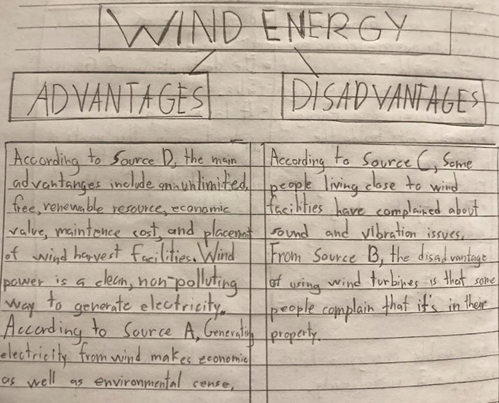
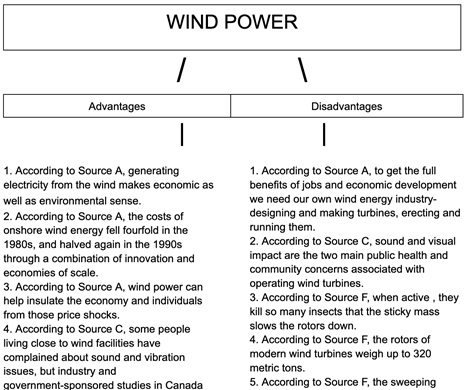
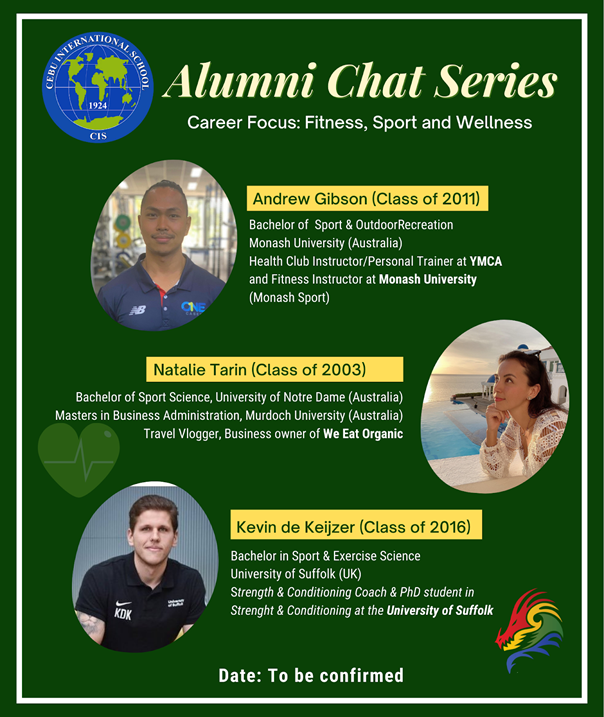


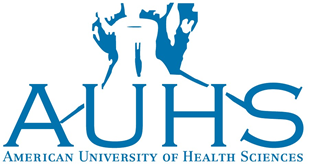



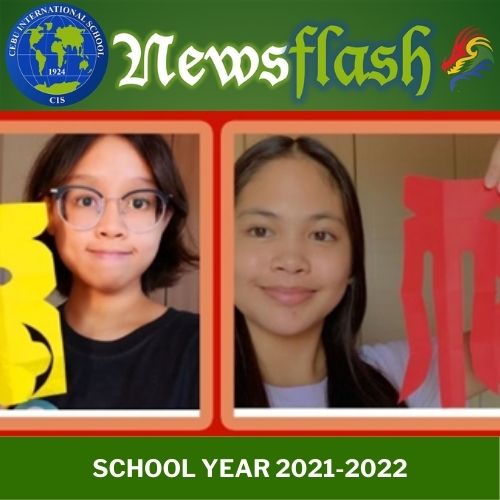
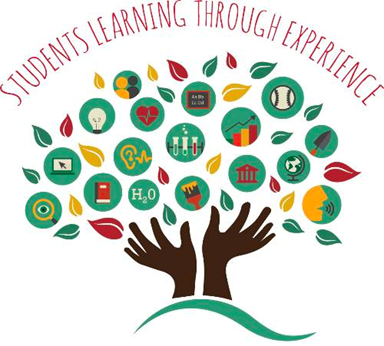
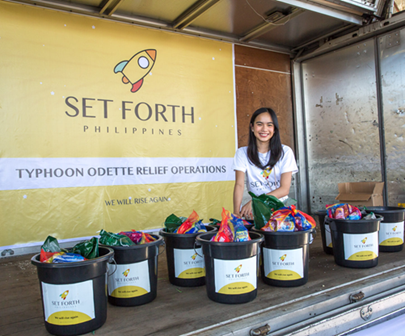 In next week’s Newsflash, we will share a summary of the wonderful projects that have been occurring this year, such as the Set Forth Philippines organization founded by CIS 11th grader Ms. Renoa King, and others. It was great to see Set Forth even get some national coverage!
In next week’s Newsflash, we will share a summary of the wonderful projects that have been occurring this year, such as the Set Forth Philippines organization founded by CIS 11th grader Ms. Renoa King, and others. It was great to see Set Forth even get some national coverage! 


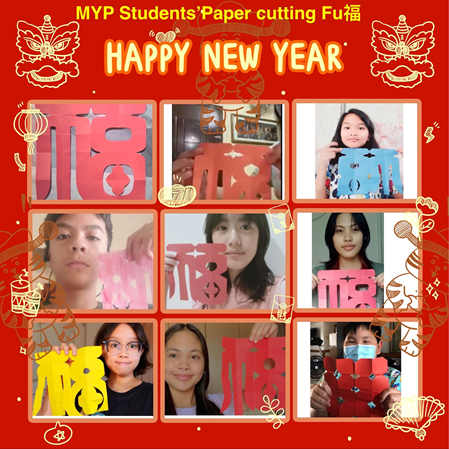 The MYP Mandarin students have been learning stories and legends about Chinese New Year, celebrating activities, food, and traditions. Although it is still online classes, the students are able to engage in activities during the ACL weeks. Grade 6 – 9 students experienced the traditional paper cutting and cut beautiful characters of “福”, which means lucky and happiness, and is very often seen in Chinese culture. In addition to this, the Grade 6 – 10 students learned about zodiac animals and know that 2022 is the year of the tiger. They made cuttings of jumping tigers by following the steps from YouTube and the instructional package from the teacher. It’s nice to see all different types of tigers from students and how they welcomed the New Year with their little tigers.
The MYP Mandarin students have been learning stories and legends about Chinese New Year, celebrating activities, food, and traditions. Although it is still online classes, the students are able to engage in activities during the ACL weeks. Grade 6 – 9 students experienced the traditional paper cutting and cut beautiful characters of “福”, which means lucky and happiness, and is very often seen in Chinese culture. In addition to this, the Grade 6 – 10 students learned about zodiac animals and know that 2022 is the year of the tiger. They made cuttings of jumping tigers by following the steps from YouTube and the instructional package from the teacher. It’s nice to see all different types of tigers from students and how they welcomed the New Year with their little tigers. 

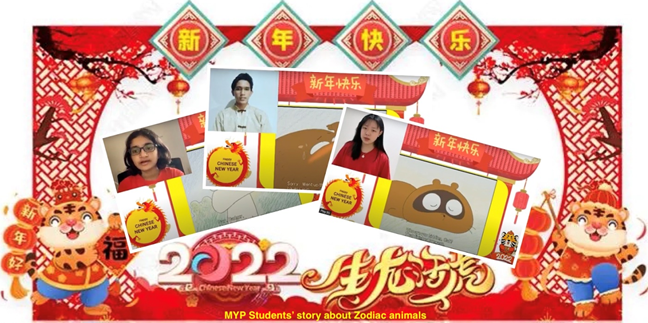

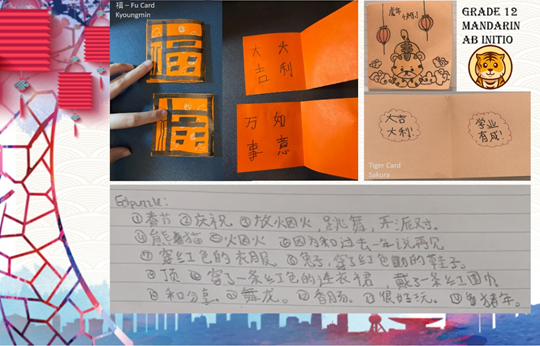






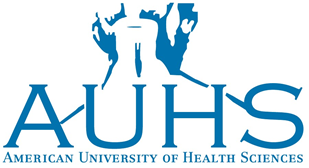
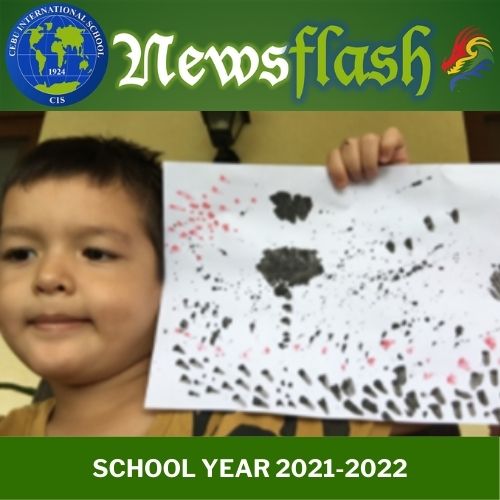
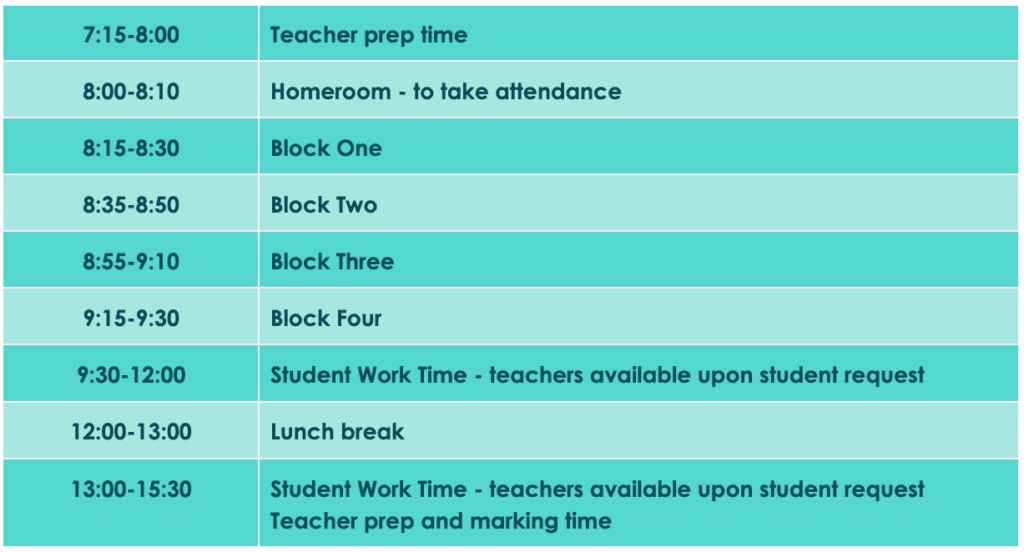




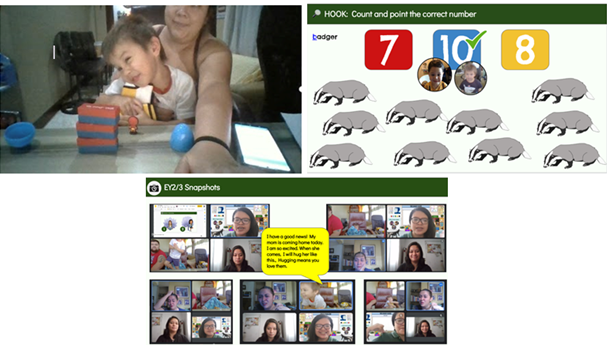
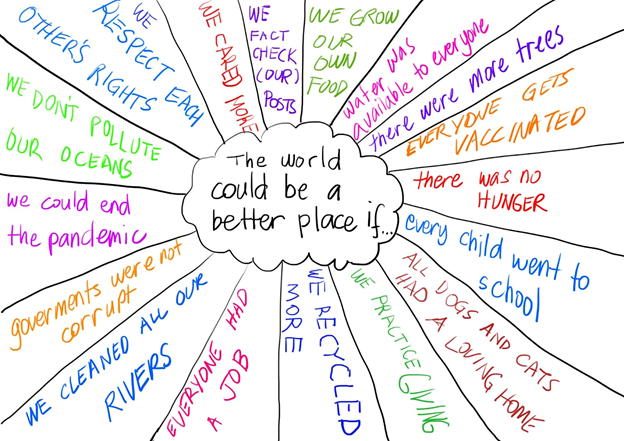
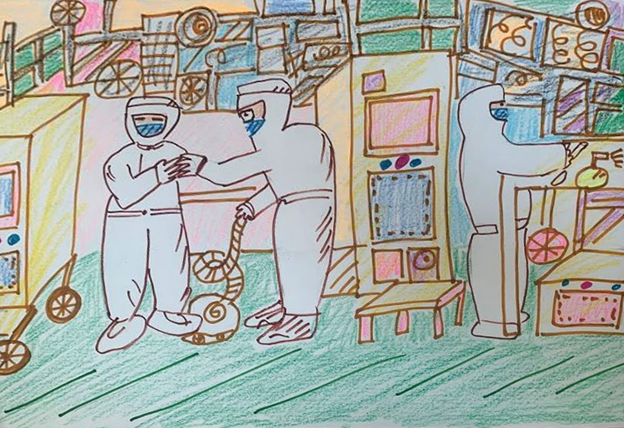






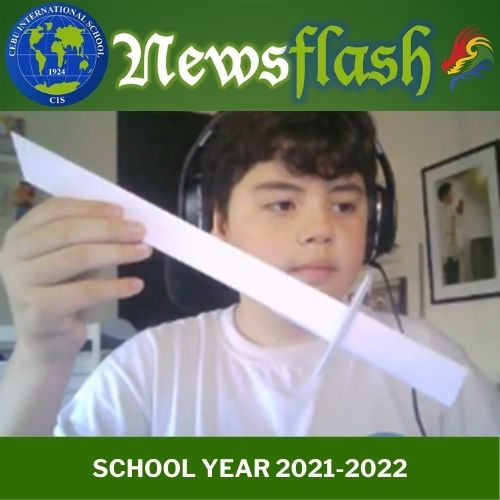

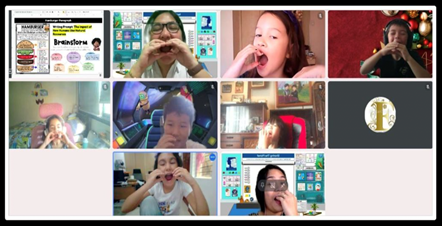
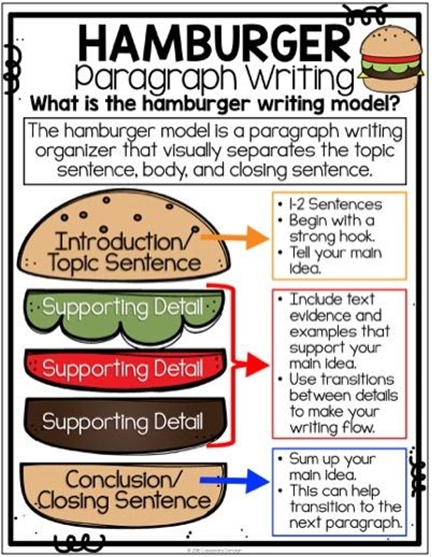
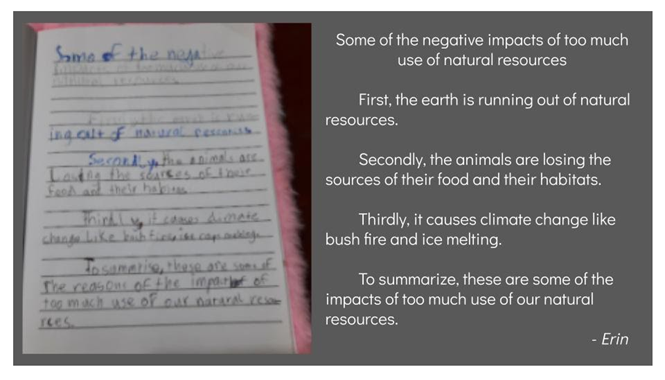
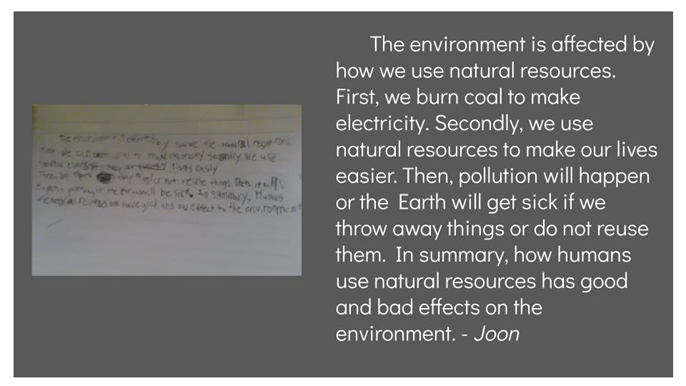
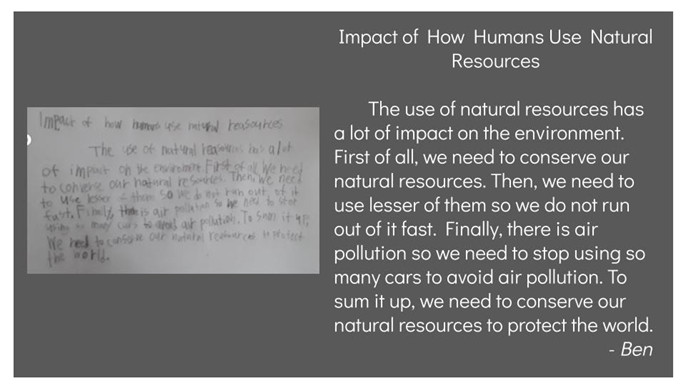

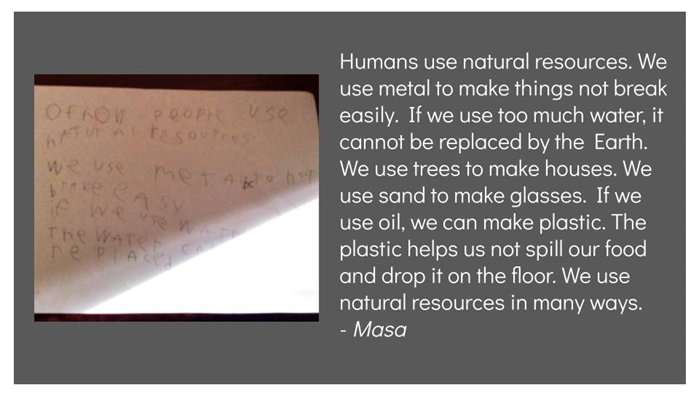
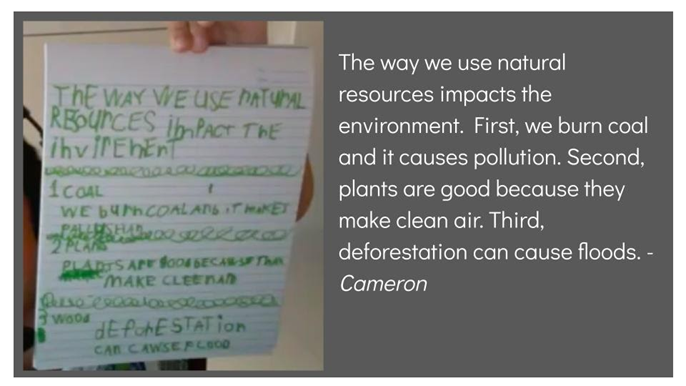

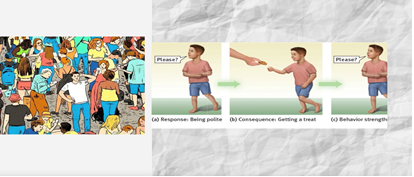


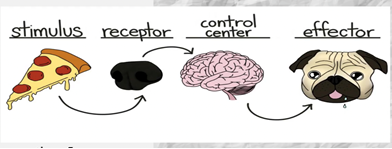
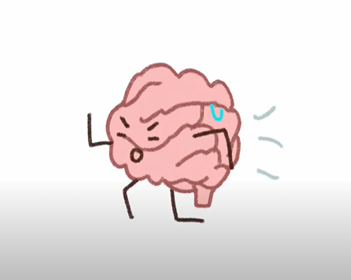




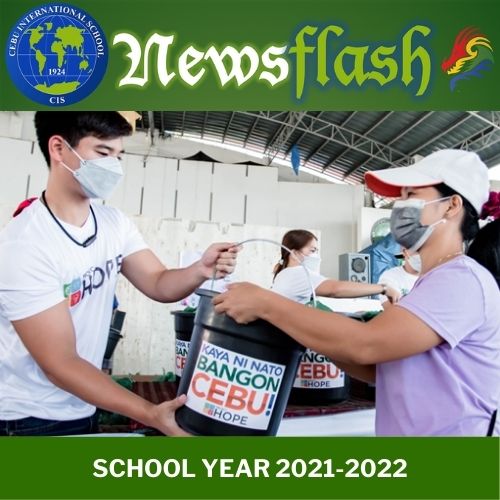
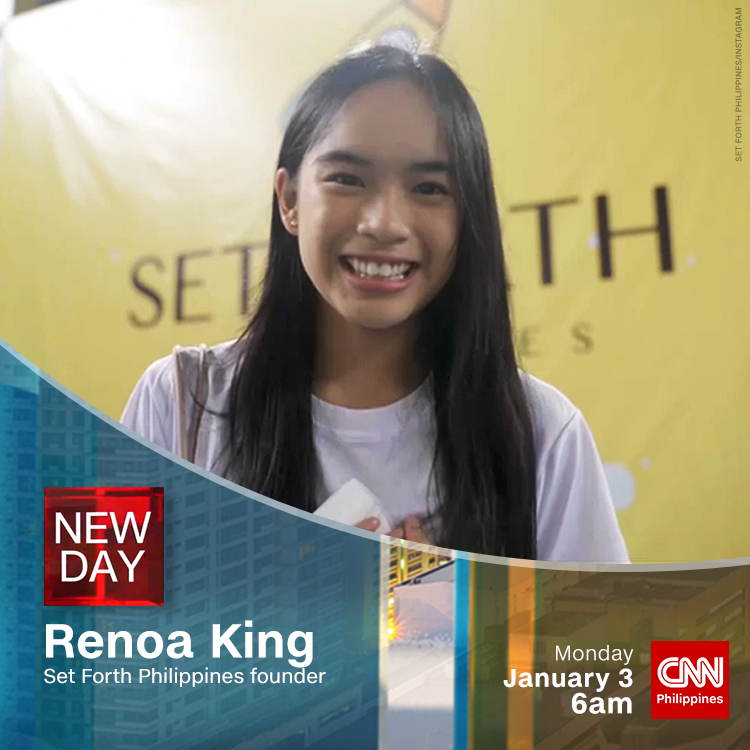


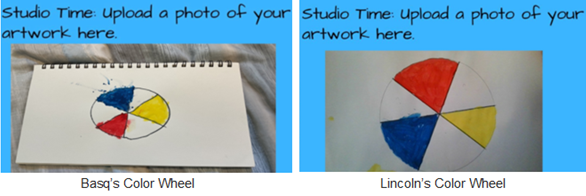
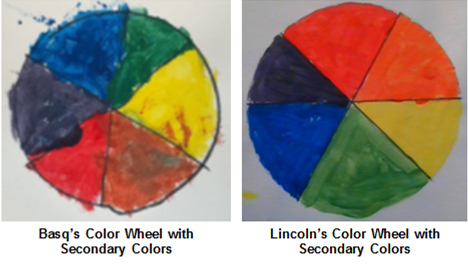
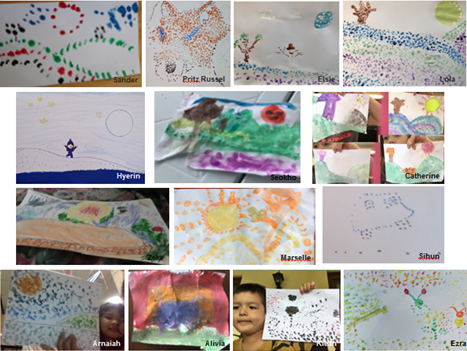
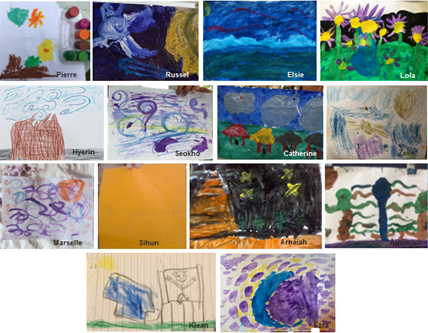

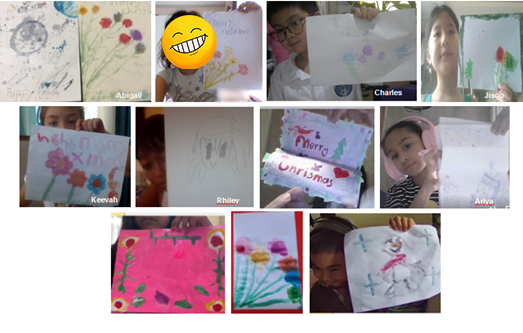
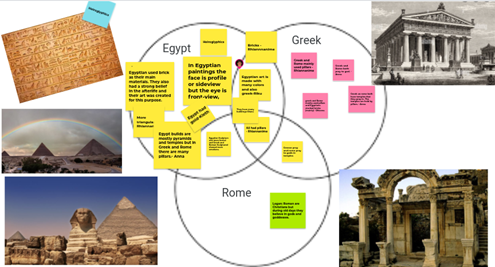
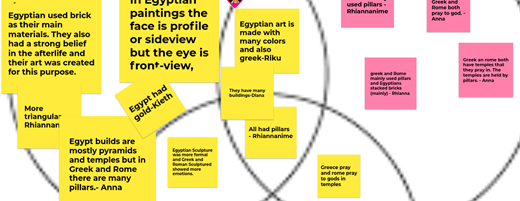


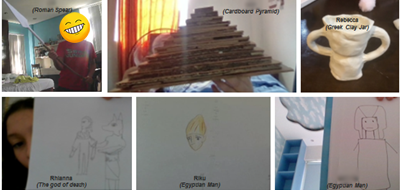



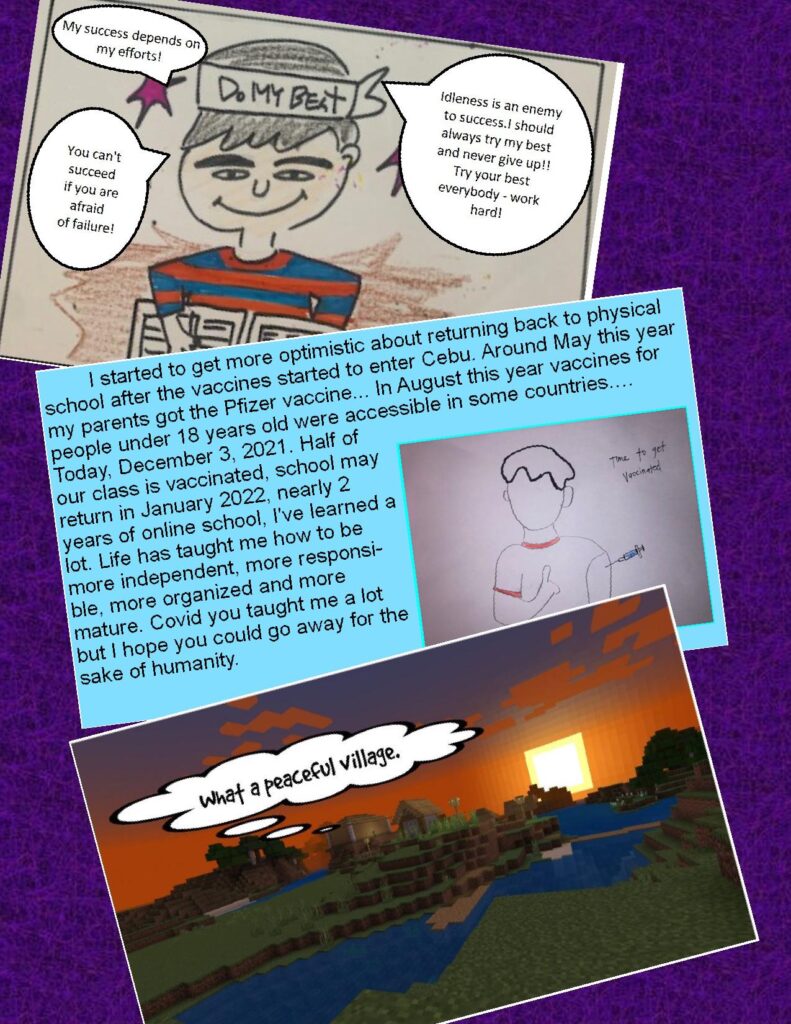
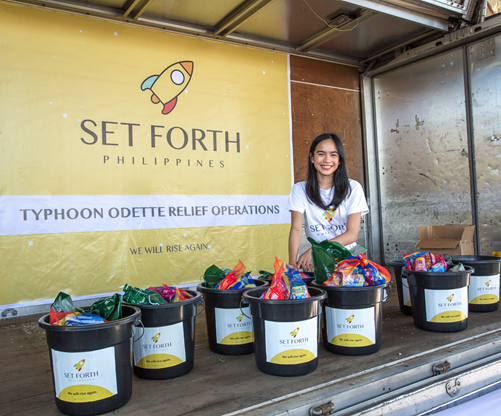 Argao
Argao 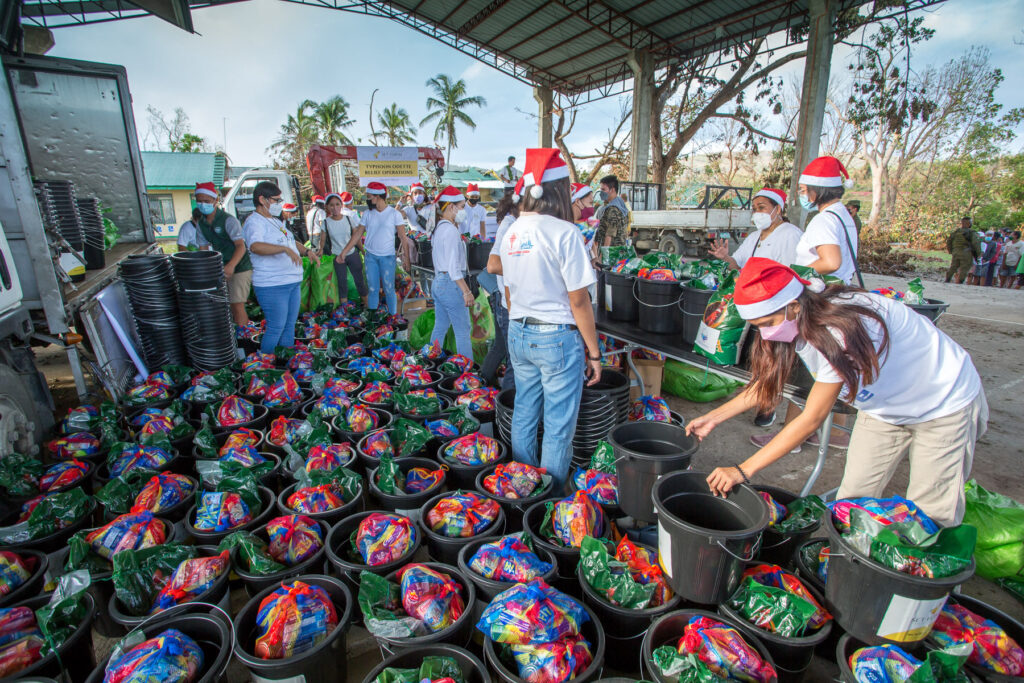 for our relief operations, we called on Dani to help us document the project. He then asked if we were looking for any more volunteers to help in the distribution since Hidilyn was in Cebu, and together with her team, they wanted to help with relief operations in any way they could. Given the opportunity to have an Olympic gold medalist join us while needing more hands on deck was one that we could not pass on. Through generously sharing her time and efforts with us on Christmas Day, she was able to bring a lot of smiles to the people in Argao.
for our relief operations, we called on Dani to help us document the project. He then asked if we were looking for any more volunteers to help in the distribution since Hidilyn was in Cebu, and together with her team, they wanted to help with relief operations in any way they could. Given the opportunity to have an Olympic gold medalist join us while needing more hands on deck was one that we could not pass on. Through generously sharing her time and efforts with us on Christmas Day, she was able to bring a lot of smiles to the people in Argao.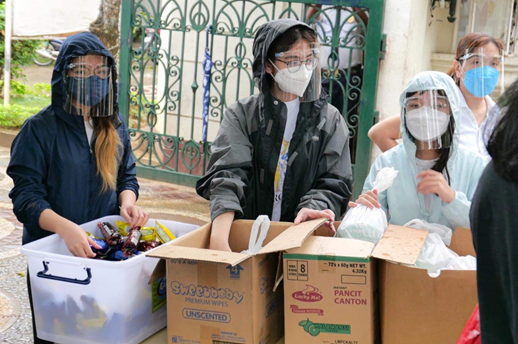 a small community within barangay Lahug that was devastated by Typhoon Odette. The aim of this relief operation was to provide water, rice and bundles of other goods to 101 families in the area. Moreover, they hoped that it would bring these families some relief and necessities since they didn’t have access to running water and electricity. The club leaders, Selly Park and Anya Chan, planned the logistics ahead of the mission. This included creating donation channels, designing posts, allocating the funds, purchasing the goods, and looking for volunteers. Among the volunteers were CIS students Sabi Fernan and Reesha Sy, and others. On the day of the relief operation, the volunteers met up in the Beverly Glen clubhouse to create the relief packages. The packages carried instant noodles, canned goods, sanitary pads, and biscuits. Moreover, rice and drinking water were distributed to the community. All in all, the 101 families were able to receive these packages ahead of the new year thanks to the kind donations received and the efforts of the volunteers. With the remaining donations, Advocacy in Action plans to organize another relief operation in Carcar City within this month.
a small community within barangay Lahug that was devastated by Typhoon Odette. The aim of this relief operation was to provide water, rice and bundles of other goods to 101 families in the area. Moreover, they hoped that it would bring these families some relief and necessities since they didn’t have access to running water and electricity. The club leaders, Selly Park and Anya Chan, planned the logistics ahead of the mission. This included creating donation channels, designing posts, allocating the funds, purchasing the goods, and looking for volunteers. Among the volunteers were CIS students Sabi Fernan and Reesha Sy, and others. On the day of the relief operation, the volunteers met up in the Beverly Glen clubhouse to create the relief packages. The packages carried instant noodles, canned goods, sanitary pads, and biscuits. Moreover, rice and drinking water were distributed to the community. All in all, the 101 families were able to receive these packages ahead of the new year thanks to the kind donations received and the efforts of the volunteers. With the remaining donations, Advocacy in Action plans to organize another relief operation in Carcar City within this month.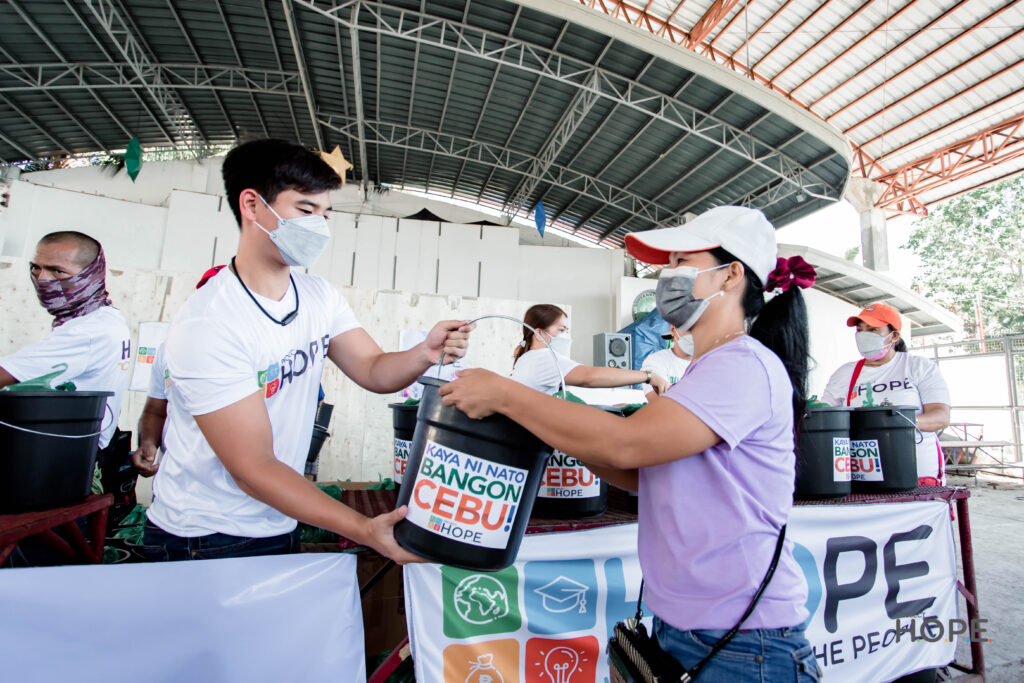

 The day after the typhoon, my family decided to drive to my grandparents’ house since we couldn’t contact them. We wanted to know if they were okay and if they were safe. As we were driving around, I saw all the destruction in the city. It made me feel very sad. I knew I had to do something. I reached out to my cousin asking her if she wanted to help me with this fundraiser. Together with my cousin from Manila, we started Homes of Hope. My cousin helps me with the social media aspect of the fundraiser since the internet connection in Cebu is still a challenge.
The day after the typhoon, my family decided to drive to my grandparents’ house since we couldn’t contact them. We wanted to know if they were okay and if they were safe. As we were driving around, I saw all the destruction in the city. It made me feel very sad. I knew I had to do something. I reached out to my cousin asking her if she wanted to help me with this fundraiser. Together with my cousin from Manila, we started Homes of Hope. My cousin helps me with the social media aspect of the fundraiser since the internet connection in Cebu is still a challenge. 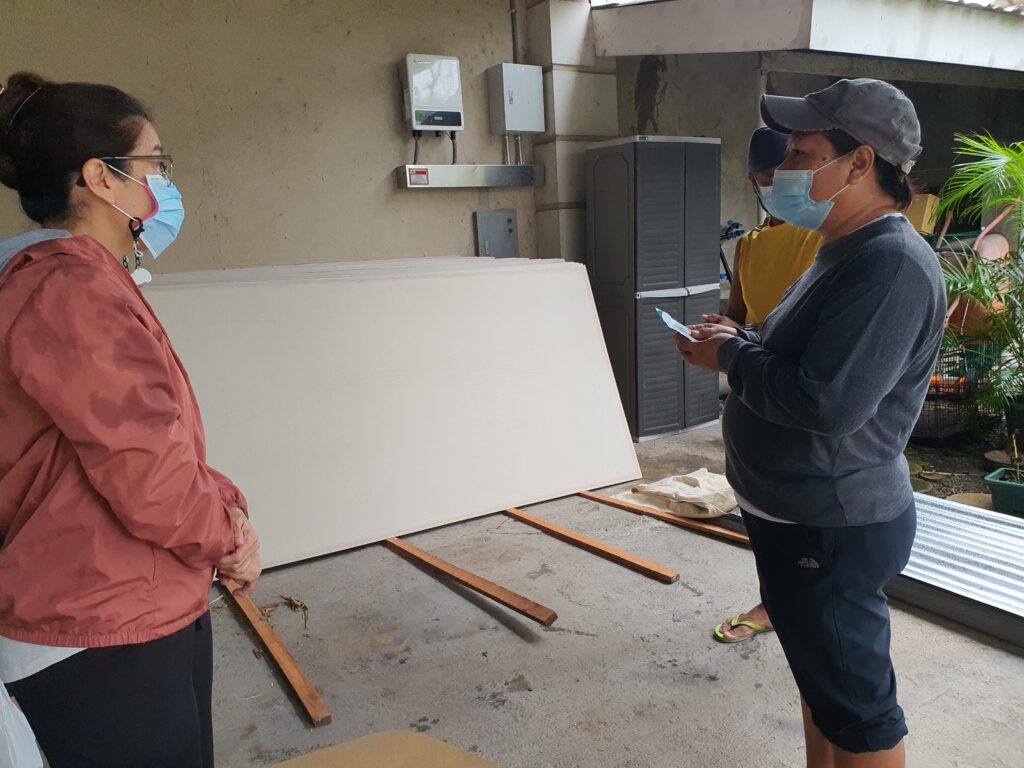
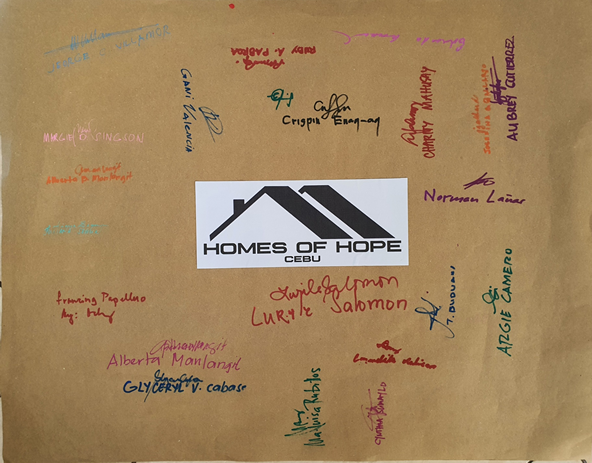
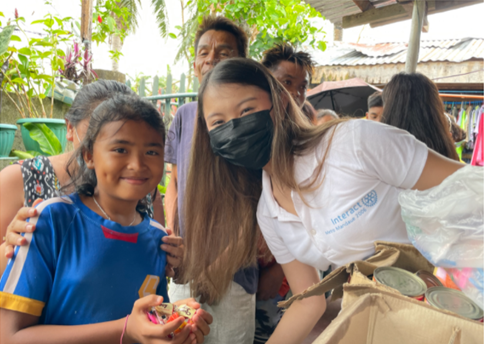 Interact, I was able to activate teams across the country to work towards immediate relief operations for Typhoon Odette as soon as it was possible. Coordination was difficult due to intermittent signal and personally having no power or water in my own household for almost a month, but work had to be done. Fundraising efforts started the day after the typhoon, and help was received at our first location at the Umapad Dumpsite Community in Mandaue a few days later. Since then, relief drives in multiple areas have followed simultaneously every week in Barangay Balisong in Argao, Municipality of Dapa in Siargao, Caohagan, Pangan-an, Pandanon, and Bagonbanwa islands. Relief goods include canned or instant food, containers of drinkable water, powdered milk for kids, trapal, basic medicines, and hygiene kits depending on the community’s needs. A few feeding drives were also organized in Jubang, Siargao through our local partner teams.
Interact, I was able to activate teams across the country to work towards immediate relief operations for Typhoon Odette as soon as it was possible. Coordination was difficult due to intermittent signal and personally having no power or water in my own household for almost a month, but work had to be done. Fundraising efforts started the day after the typhoon, and help was received at our first location at the Umapad Dumpsite Community in Mandaue a few days later. Since then, relief drives in multiple areas have followed simultaneously every week in Barangay Balisong in Argao, Municipality of Dapa in Siargao, Caohagan, Pangan-an, Pandanon, and Bagonbanwa islands. Relief goods include canned or instant food, containers of drinkable water, powdered milk for kids, trapal, basic medicines, and hygiene kits depending on the community’s needs. A few feeding drives were also organized in Jubang, Siargao through our local partner teams. 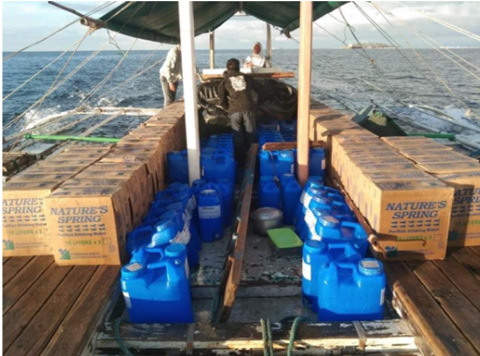 I plan to continue heading fundraising and relief efforts in the organization for the rest of the month of January in different affected areas where Interact teams are able to extend to. Currently, about a thousand relief packs, 1,700 liters of drinking water in separate containers, and a few hundred hygiene kits have been distributed with more to come. Here are a few upcoming relief operations to expect from Interact soon: Feeding Drive at Poblacion Talisay-Coastal Community, Relief Distributions at Southern Leyte State University, Limasawa Island, and Pangan-an Island.
I plan to continue heading fundraising and relief efforts in the organization for the rest of the month of January in different affected areas where Interact teams are able to extend to. Currently, about a thousand relief packs, 1,700 liters of drinking water in separate containers, and a few hundred hygiene kits have been distributed with more to come. Here are a few upcoming relief operations to expect from Interact soon: Feeding Drive at Poblacion Talisay-Coastal Community, Relief Distributions at Southern Leyte State University, Limasawa Island, and Pangan-an Island.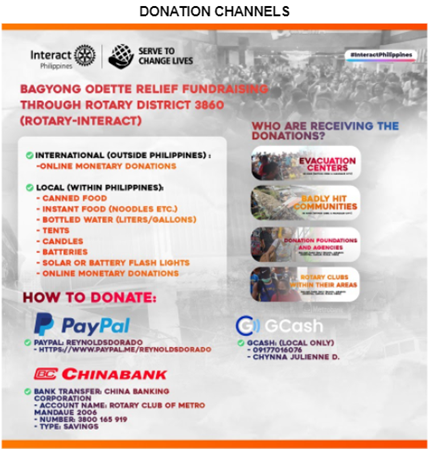
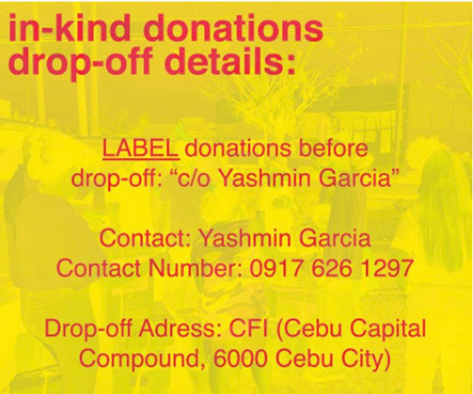



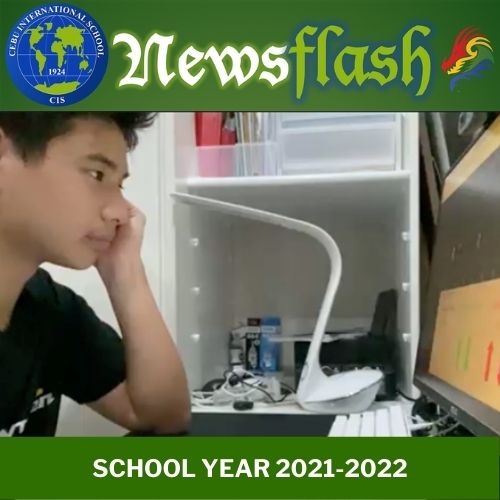


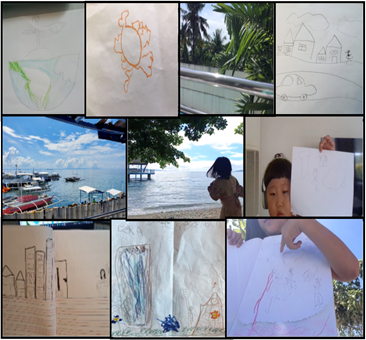
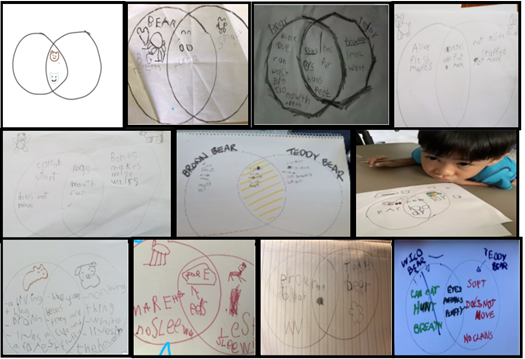
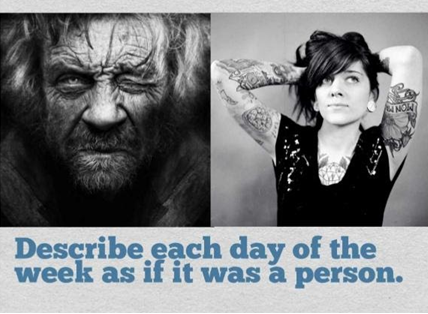
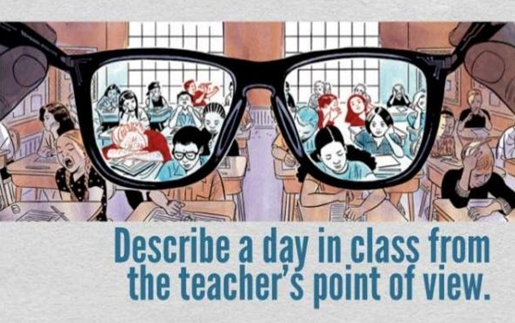


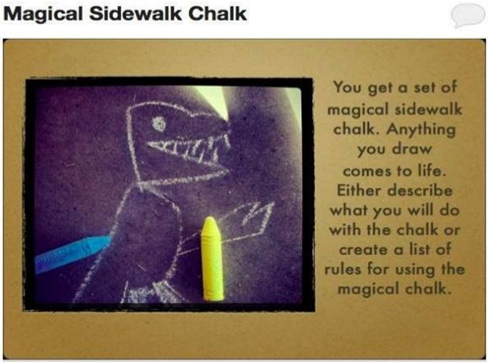

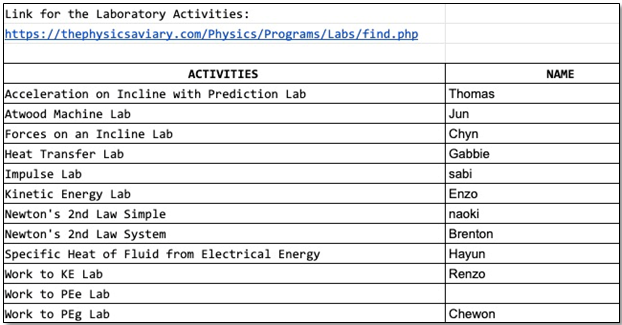
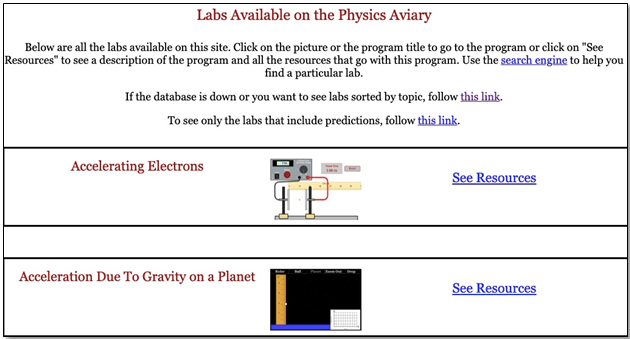
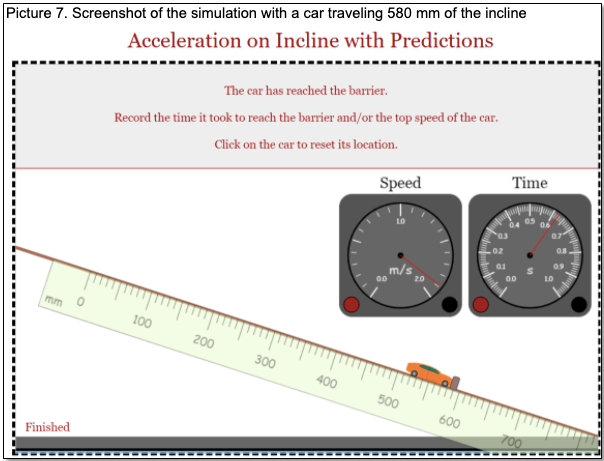

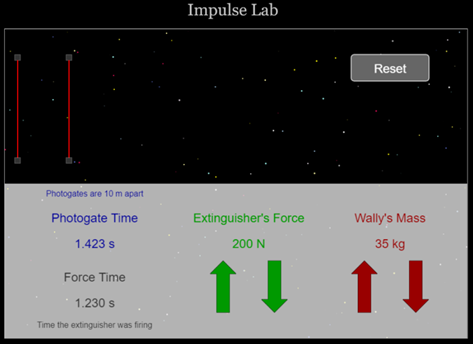


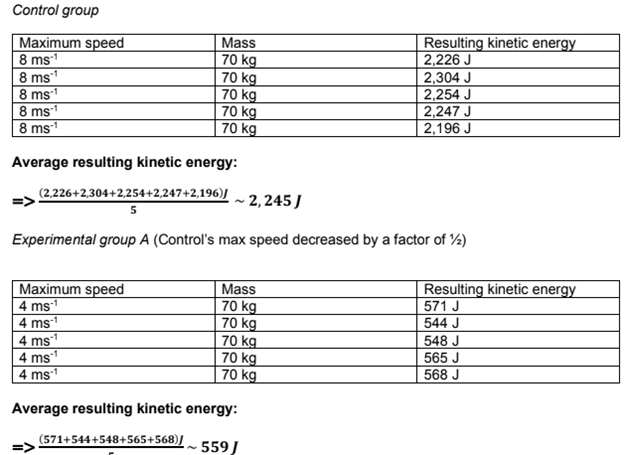
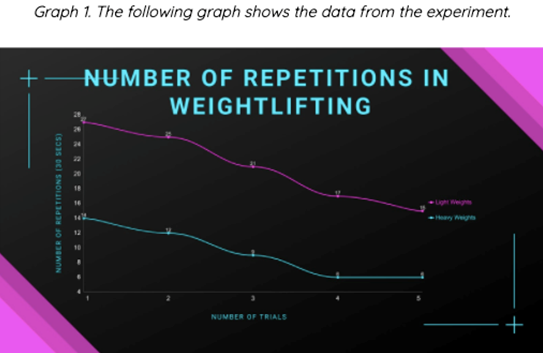
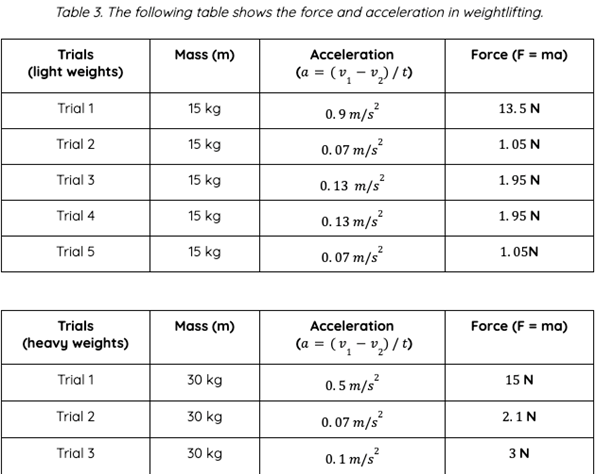
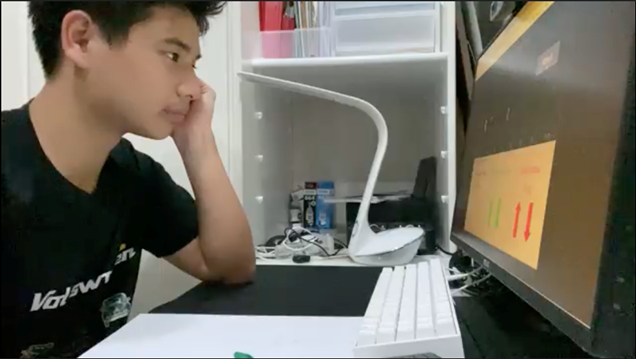





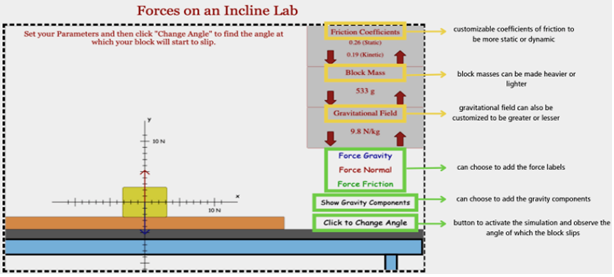
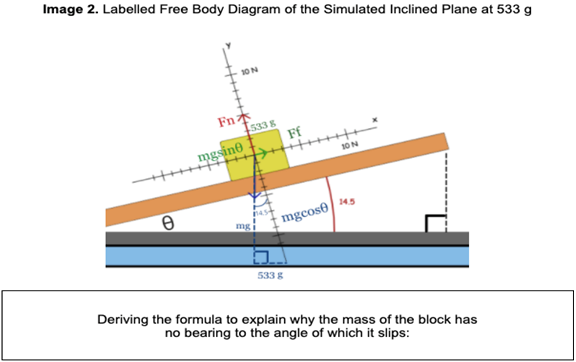

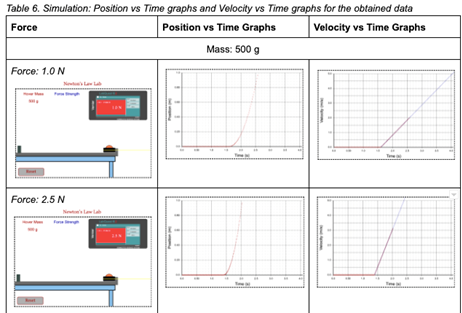
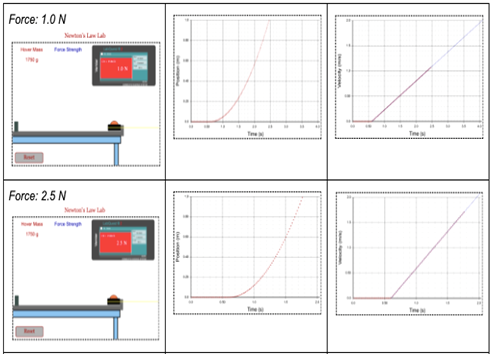
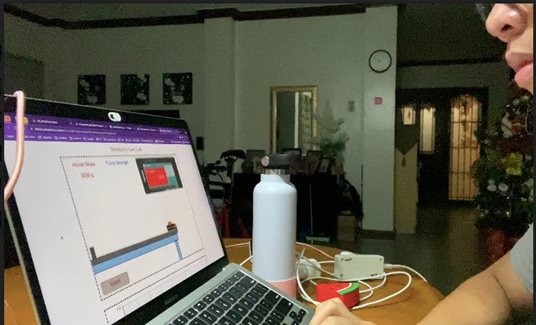

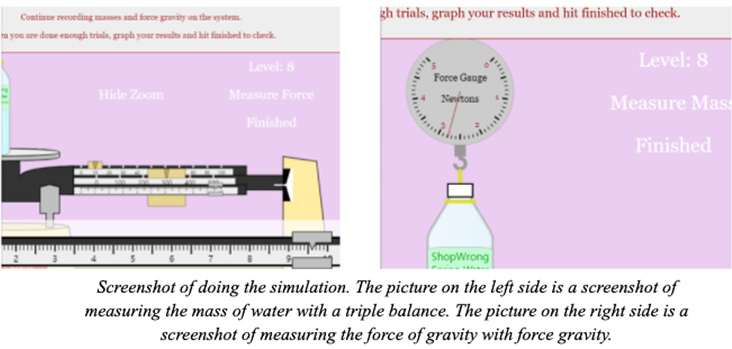

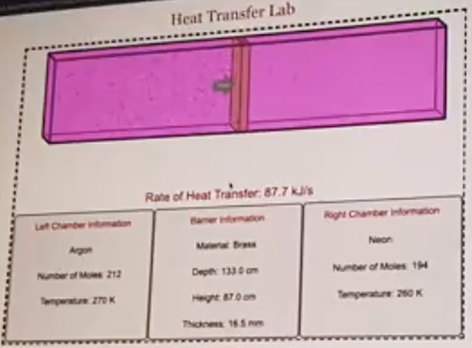
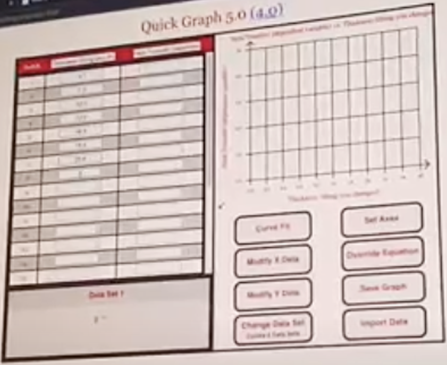


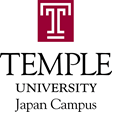





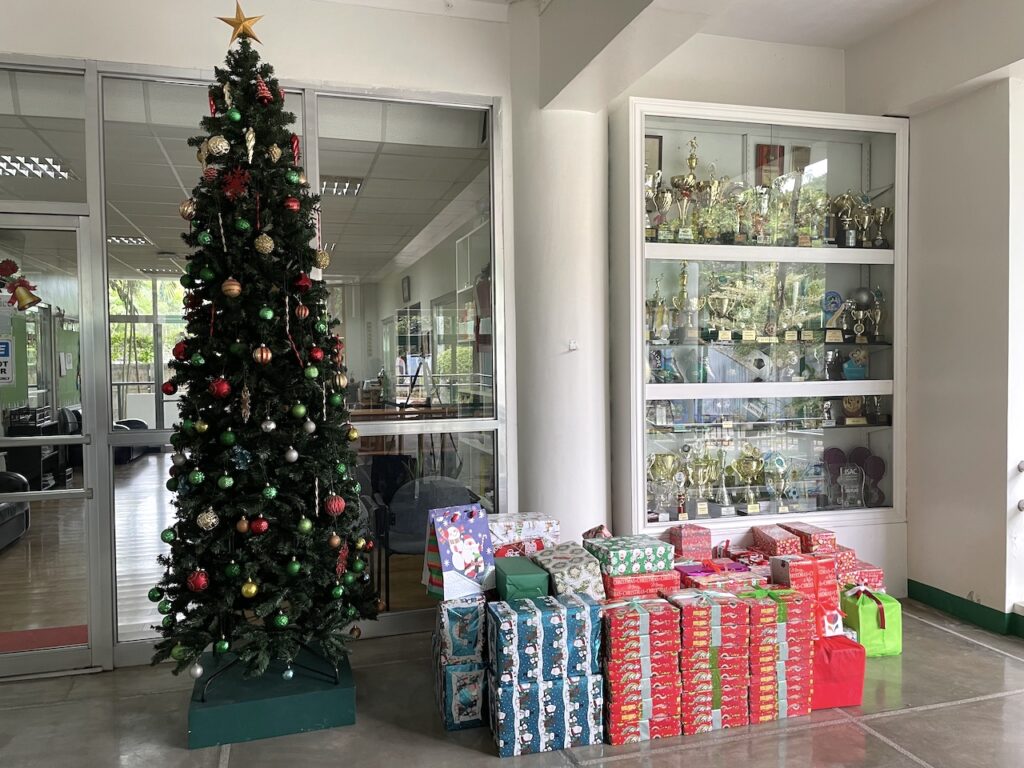
 In the Early Years, we explored how people connected to us like our family and friends shaped our community. We looked into the things we like and our roles. Being in different roles, we realized that we also have different responsibilities to our family and friends. We have concluded that our number one responsibility to make everyone happy is to be a good boy by listening to our parents and siblings. As we are nearing the end of our unit Who We Are, we begin to reflect on how these things shaped who we are as a community and look into ways to show respect to each other’s differences.
In the Early Years, we explored how people connected to us like our family and friends shaped our community. We looked into the things we like and our roles. Being in different roles, we realized that we also have different responsibilities to our family and friends. We have concluded that our number one responsibility to make everyone happy is to be a good boy by listening to our parents and siblings. As we are nearing the end of our unit Who We Are, we begin to reflect on how these things shaped who we are as a community and look into ways to show respect to each other’s differences.
 For our math, we practiced our numbers by recognizing the numerical symbol and matching the quantity it represents in our activities. We had our young learners write the numbers 1-10 on each cup, then place the number of popsicles sticks in each cup. We also had another activity where we matched the numbers on the cups. We counted the number of dots in each circle drawn on paper and then matched them to the numerical symbol written underneath the cups. Our young learners can count and recognize numbers from 1-10.
For our math, we practiced our numbers by recognizing the numerical symbol and matching the quantity it represents in our activities. We had our young learners write the numbers 1-10 on each cup, then place the number of popsicles sticks in each cup. We also had another activity where we matched the numbers on the cups. We counted the number of dots in each circle drawn on paper and then matched them to the numerical symbol written underneath the cups. Our young learners can count and recognize numbers from 1-10. 
